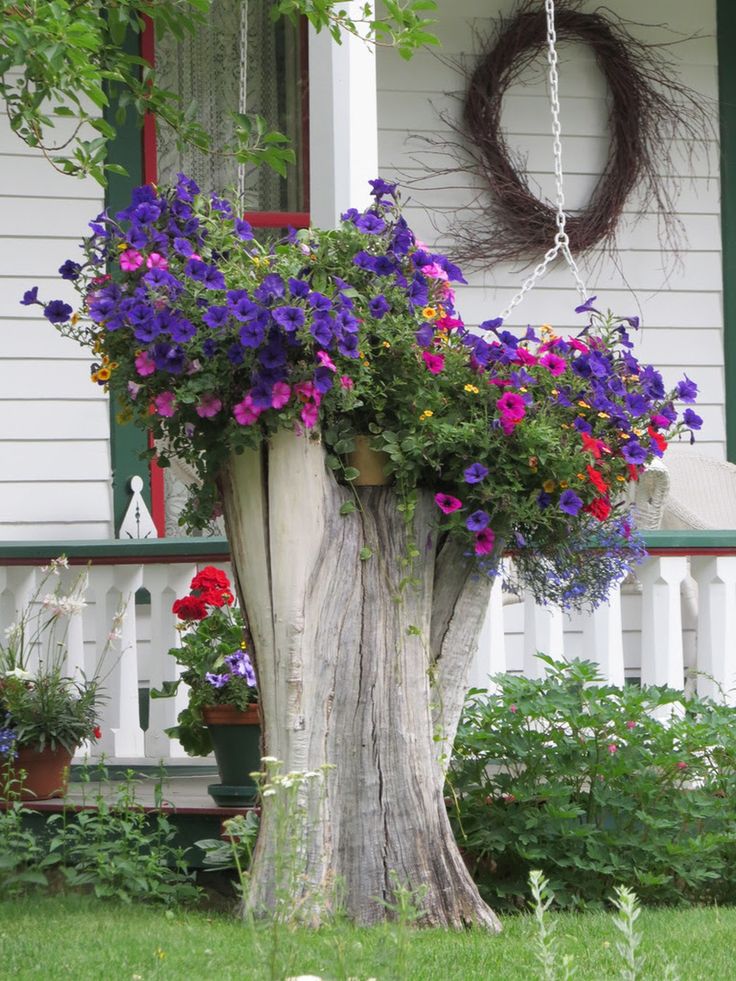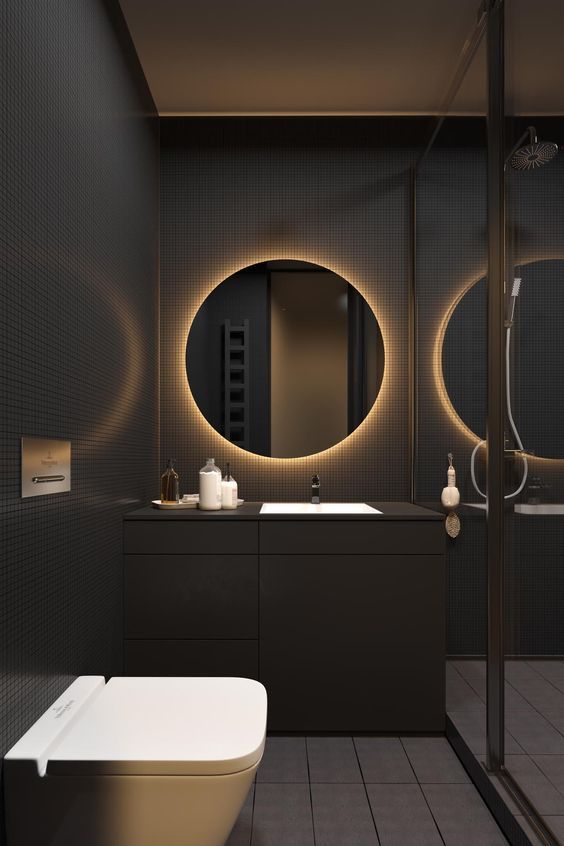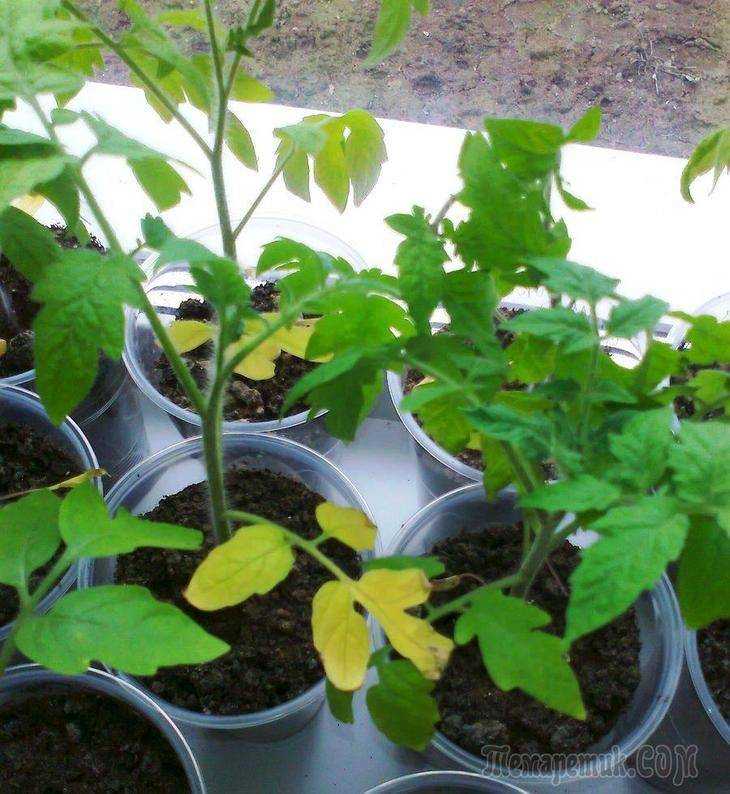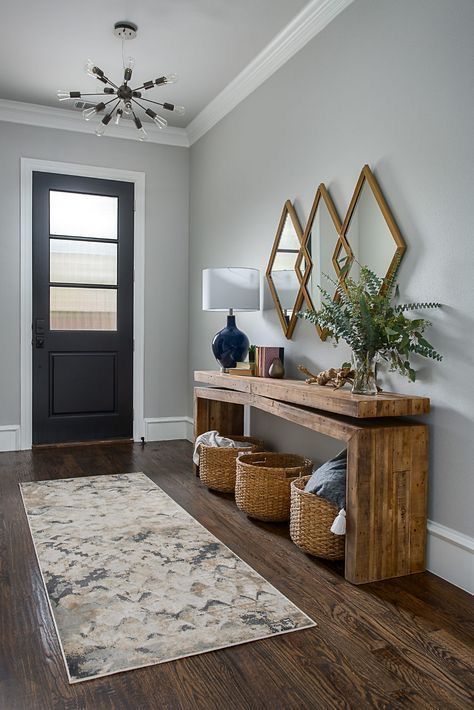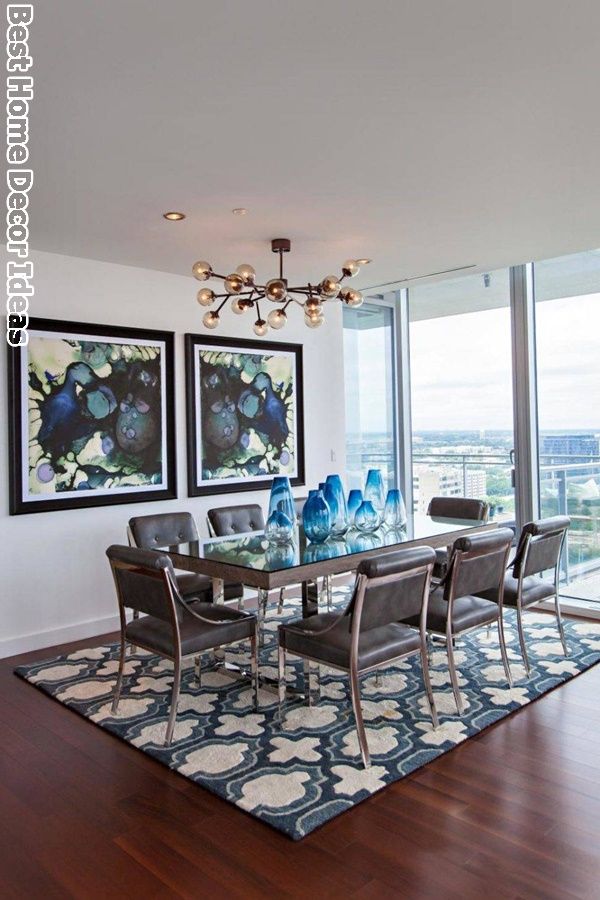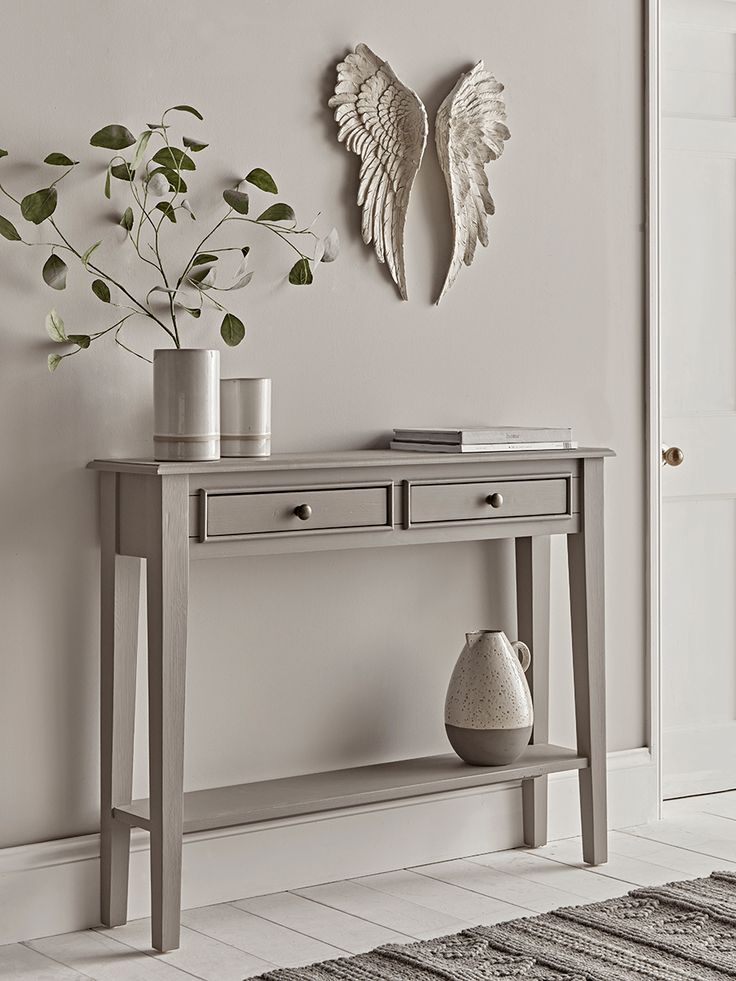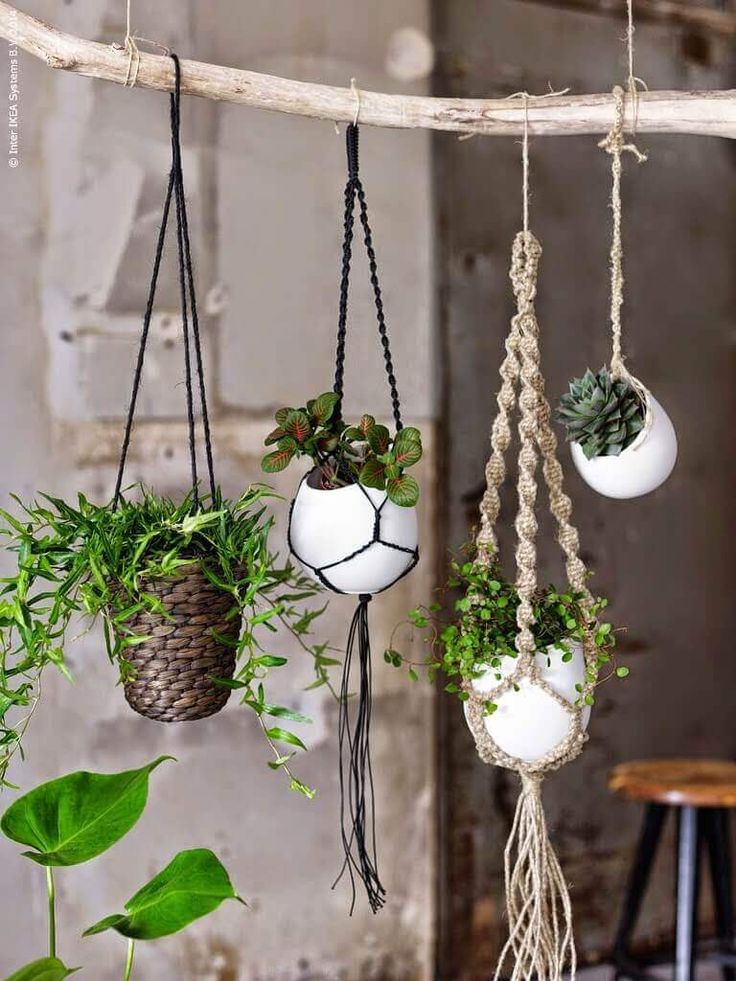How to decor your garden
18 Tips for Decorating Your Garden
1. Use Ornaments as Finishings
Photo by Jennifer CheungMuch more than an afterthought, garden ornaments can guide how you shape and use your outdoor space, and affect how it feels when you're in it. A wrought-iron gate can mark the entrance to a world of green, a tree-hung lantern raise your perspective, a curved bench inspire a nap. Carefully placed, pretty yet practical, these elements offer subtle but effective clues: Turn here. Look up. Slow down. They also give a garden space a finished look in all four seasons. The trick is to not overdo it.
Shown: A weathered iron pendant, with some bulbs removed for a moody glow, hangs from a tree over a bed of agaves.
2. Design for Outdoor Rooms
Photo by Jennifer Cheung"A furnished garden shouldn't look too perfect or contrived," says Susie Beall, an interior designer who, with her architect husband, Ed, conceived the gardens on their rolling acre in Southern California. Their goal: to create outside rooms as comfortable as the ones inside.
Shown: Succulents spill out of a pillar-like planter at a path entrance, with an iron bell hanging from a nearby tree.
3. Don't Be Afraid of Patina
Just as they remade their 1950s ranch house in the style of a Tuscan farmhouse, the couple wanted a landscape with patina. They started by adhering to a simple, mostly green palette of plants starring pepper, cypress, and Chinese elm trees amid rosemary, acanthus, Virginia creeper, and white 'Iceberg' roses. "Garden decor can get lost in a highly colorful landscape," says Susie. "For us, our mostly stone ornaments are the busy part, and they pop against the green background." Certain items, picked up on their travels, may be pedigreed and pricey, but they share ground with catalog and nursery finds, so nothing seems too precious. Read on to learn how they used decorative objects to create seductive outdoor living spots.
Shown: A lantern sits on a stone shelf, with a mirror providing a window onto the green world.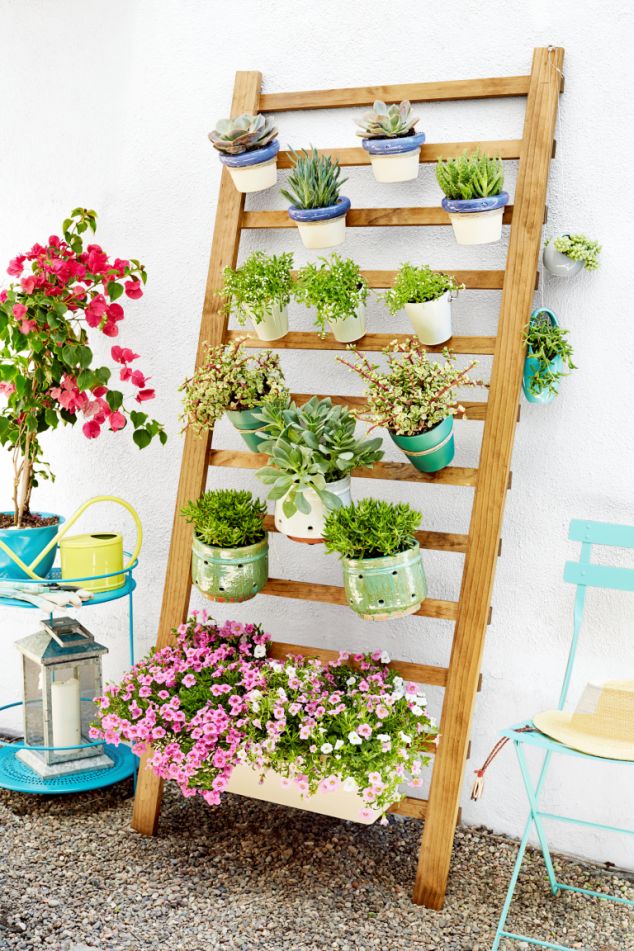
4. Repeat Your Home's Exterior Style
Whatever the style of your home, ornaments can carry it into the landscape, grounding the building in its setting. Here, to harmonize with the rustic stone-clad entry, iron urns are set atop matched terra-cotta pedestals. In the courtyard, a pediment decorated with dolphins and holding potted succulents echoes the theme and creates a focal point. The house's stone is picked up in the pavers, seamed with grass that softens the walk to the front door.
5. Dress Up Garden Entrances
Photo by Jennifer CheungEven in a small landscape, a sequence of discrete spaces, connected by passageways and paths, adds a sense of mystery and expansiveness to an ordinary stroll. The Bealls created a journey that begins with a wisteria-draped arbor near the house and winds downhill, across terraces, along walks, and down steps that continue the theme of eye-catching, weatherworn stone. Paths indicate the way; iron arches and gates—many from gardener's-supply catalogs and covered with vines—mark transitions to different areas.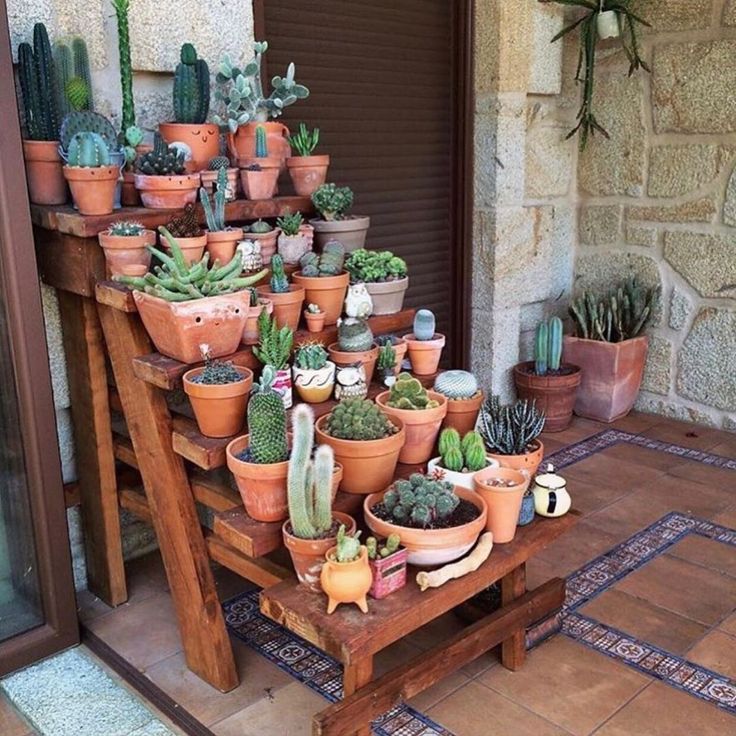 Potted bougainvillea, citrus trees, and palms further accent entries, as do finials perched on pedestals.
Potted bougainvillea, citrus trees, and palms further accent entries, as do finials perched on pedestals.
6. Tie Furnishings Into the Overall Scheme
Photo by Jennifer CheungThe style of any tables and chairs you choose has a big impact on the look of your outdoor spaces, of course. But they should also feel cohesive with the other decorative objects and materials you use. The Bealls found a pair of inexpensive rust-finished iron dining sets at a pottery yard. With extra chairs scattered around the paved "carpet," they make a casual lounge for cocktails and conversation.
7. Choose Decor Suited for The Outdoors
Photo by Jennifer CheungElsewhere, the couple created an outdoor living room, but instead of pricey all-weather wicker, they chose roll-arm wicker chairs from an import store and weatherized them with spray-on marine varnish. Concrete pottery-yard pedestals double as extra seats and cocktail tables.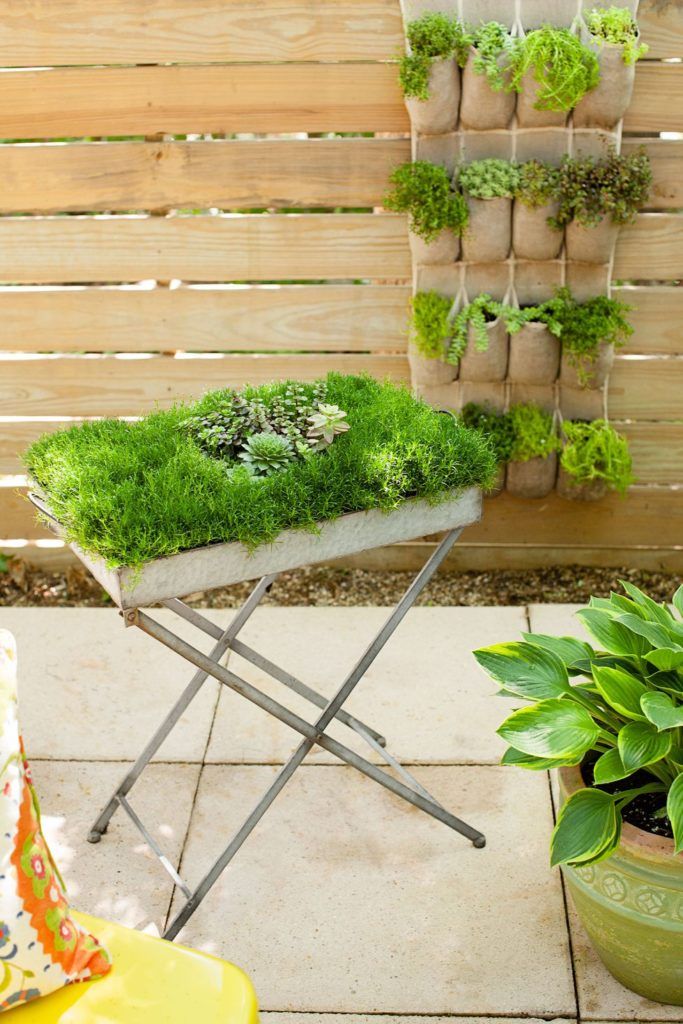 A black oval aluminum dining set anchors the main gather-round eating space.
A black oval aluminum dining set anchors the main gather-round eating space.
8. Take Lighting to Another Level
Photo by Jennifer CheungMany landscapes are most romantic after dark—by the glow of the moon and when well-placed electric lights spotlight trees and light up paths. The Bealls took their lighting a step further, hanging gracious outdoor lanterns from the boughs of trees. They also used tall streetlight-style lamps to punctuate patios and roundabouts. All these fixtures coordinate with the lights placed on the house's exterior walls.
9. Showcase Plant Collections
Photo by Jennifer CheungBesides singling out favorite specimens for pots and pedestals, the Bealls grouped container plants where they could appreciate them at eye level. Ed, whose passion is succulents—aeoniums, senecios, echeverias, agaves—displays them on a vintage pine table and a painted chest of drawers that he coated with a waterproofing sealer for wood.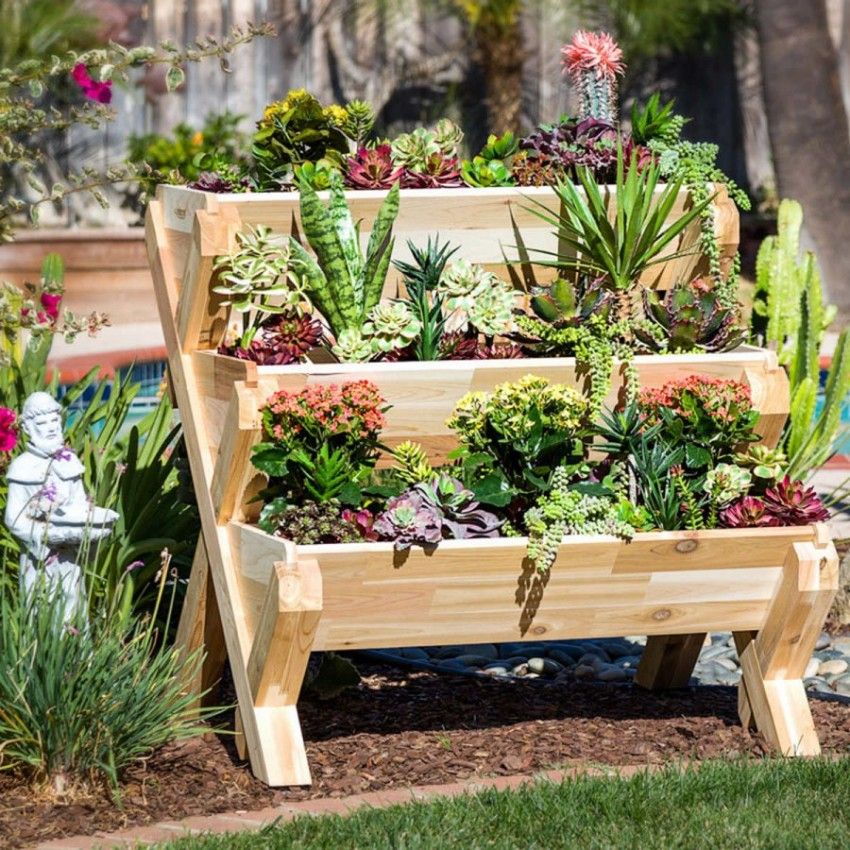 "If you tucked these plants in beds, they'd disappear," Susie notes. "Here, you can study all their unusual shapes."
"If you tucked these plants in beds, they'd disappear," Susie notes. "Here, you can study all their unusual shapes."
10. Embrace Unusual Displays
Photo by Jennifer CheungA rusty iron basket cradles tabletop succulents so they can stand out from the plant beds.
11. Let Decorative Elements Play Up Sound
Photo by Jennifer CheungHearing the trickle of water is an all-but-irresistible lure to exploring a garden. Listening to its music, you want to track it to its source, and in the Bealls' landscape there are many. A fountain with an octagonal basin creates the liquid soundtrack for the herb garden. Another, echoing the columnar shape of Italian cypress trees nearby, bubbles amid flower-like agaves, drawing hummingbirds in droves. Both pieces were pottery-yard scores.
12. Entice with Garden Scents
Photo by Jennifer CheungThe fountain with lions' heads that cools the lounging area is an antique find.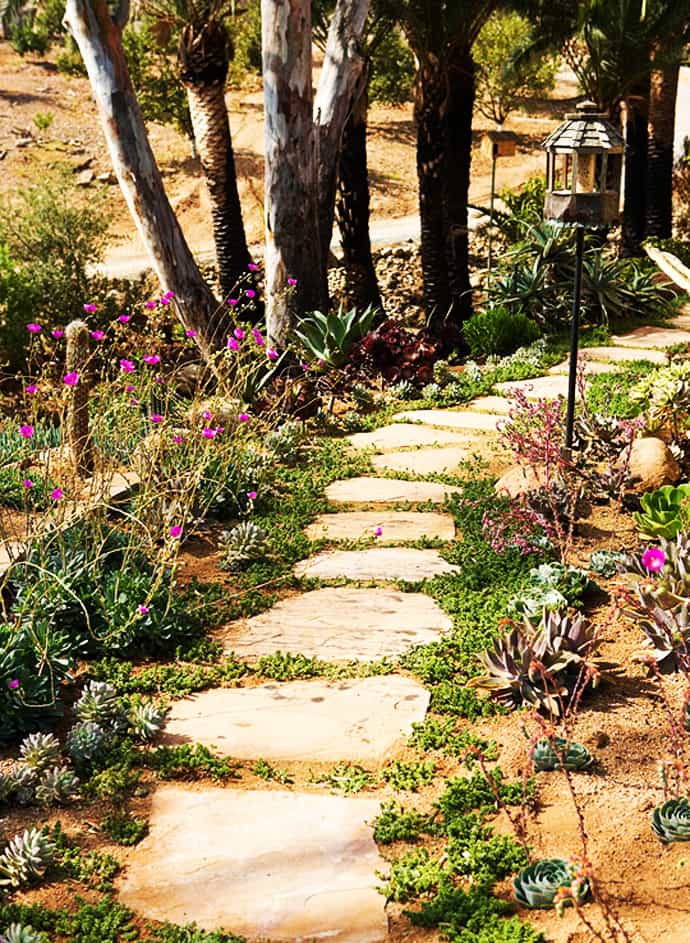 Plant perfumes, often wafting from architectural containers, demand their own blissful attention: The entryway urns welcome visitors with honeysuckle and jasmine; giant herb-garden containers offer up lemon blossoms; and night-blooming cereus opens in pots around the main dining table.
Plant perfumes, often wafting from architectural containers, demand their own blissful attention: The entryway urns welcome visitors with honeysuckle and jasmine; giant herb-garden containers offer up lemon blossoms; and night-blooming cereus opens in pots around the main dining table.
13. Use Plants Themselves as Ornaments
Certain plants are inherently architectural or can be pruned to look that way. Among those naturally shaped to give the gardens guiding lines are Italian cypresses, which rise like green columns against the Bealls' hillside views. Others include the rosettes of Agave attenuate that tumble around stone stairways and fountains in dynamic contrast to the ramrod-straight cypress.
14. Add Splashes of Color with Ceramics
Photo by Jennifer CheungAppreciating the serenity of a largely green garden, the Bealls were sparing with color accents, so those that are there have great panache. On a patio outside the master bedroom, they flanked French doors with teal-blue ceramic pots filled with foliage plants that draw the eye from a distance.
15. Repurpose Found Objects as Containers
Photo by Jennifer CheungA 1920s drinking fountain decked dramatically with vintage Malibu art tile is repurposed as a planter, holding more of Ed's succulents.
16. Give a Garden a Lived-In Look
Photo by Jennifer CheungOrnaments with the patina of antiques can make a new garden appear as if it's been growing forever. To achieve this illusion, the Bealls incorporated treasures from their travels—including Gothic cathedral fragments bought from a salvage dealer—into landscape scenes. Placed in a gravel clearing, these stone bits and spires bring a fanciful, lost-city tableau to a garden designed just a few years ago.
17. Lend Some Historical Context
Photo by Jennifer CheungFor a similar effect, they placed a concrete horse's head—a cast from one that had adorned the Parthenon—beside a bench. A garden-ornament catalog find, it's right where a seated visitor can reach out and touch it.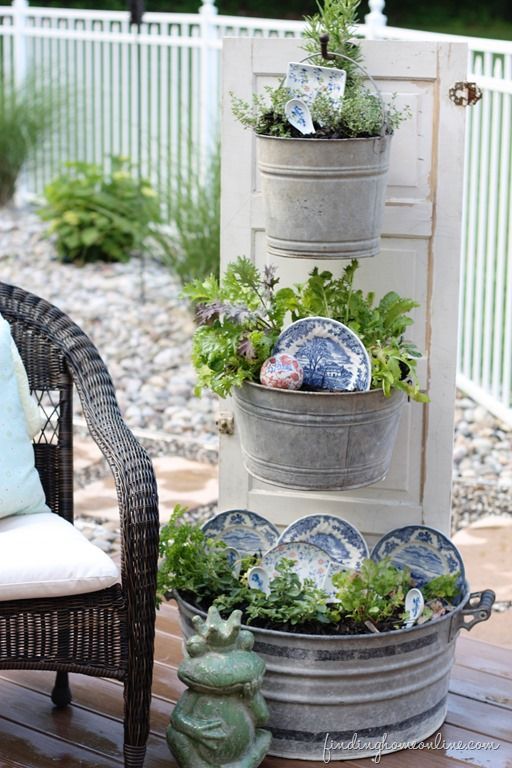
18. Mix in Some Old World Flavor
Photo by Jennifer CheungA birdbath with a fish at its center, placed where paths converge, has the look of an Old World fountain. Rusty lanterns, plant baskets, and watering cans, some picked up at flea markets, round out the timeworn decor.
45 Backyard Decorating Ideas - Easy Backyard DIY Projects & Tips
Jessica Bordner; Designer: Ginny Macdonald
After months of entertaining indoors, it's finally time to move the fun outside. If inviting friends over for al fresco parties, lounging by the pool and playing lawn games are top of mind for you as the weather turns warmer, you're probably also wondering how you can make your backyard look as nice as possible this season. But you don't need a huge budget or a professional landscaper to create a beautiful outdoor oasis — all you need is a few creative backyard decorating ideas in your arsenal!
Regardless of how sunny or shady, woodsy or open, large or small your backyard is, ahead you'll find all kinds of smart gardening tips, stylish outdoor furniture finds and DIY inspiration to create cozy gathering spots complete with fire pits, container gardens, tree houses, outdoor dining areas and more.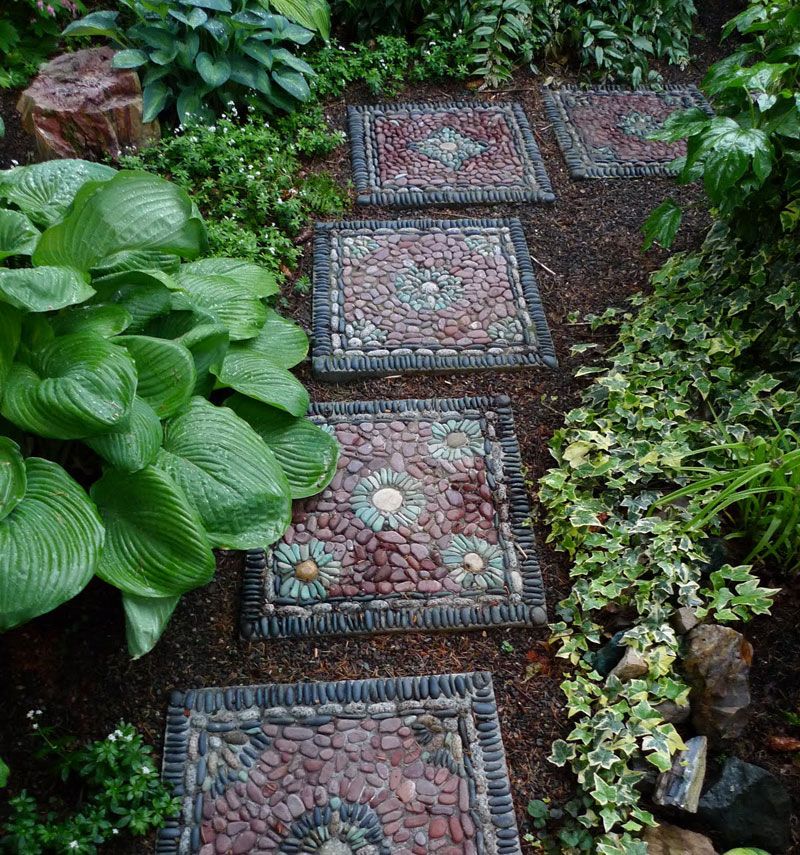 Whether you're after a minimalist look that relies on outdoor cafe lights and clever ways to display plants (you can't go wrong with a vertical garden, for instance!) or you want to test your DIY skills by making a side table crafted from weathered shutters, we have you covered. It's time for your yard to get a whole new look!
Whether you're after a minimalist look that relies on outdoor cafe lights and clever ways to display plants (you can't go wrong with a vertical garden, for instance!) or you want to test your DIY skills by making a side table crafted from weathered shutters, we have you covered. It's time for your yard to get a whole new look!
Lisa Romerein
1 of 45
Install a Makeshift Bar
If you're short on space but love to entertain, go for a compact bar setup. A simple fold-out wall shelf, with just enough room for essentials like cutting boards and utensils, is all you need to get the job done, and a barrel can stand in as a cocktail table.
Brian Woodcock
2 of 45
Hang Plants at Different Heights
Can't get enough of potted plants? Bring order to your ever-growing collection by choosing greenery in varying heights. It's an easy way to boost your outdoor space's visual appeal.
Eric Roth
3 of 45
Craft an Outdoor Living Room
There's no reason why you can't carry the aesthetic of your indoor living room straight outdoors.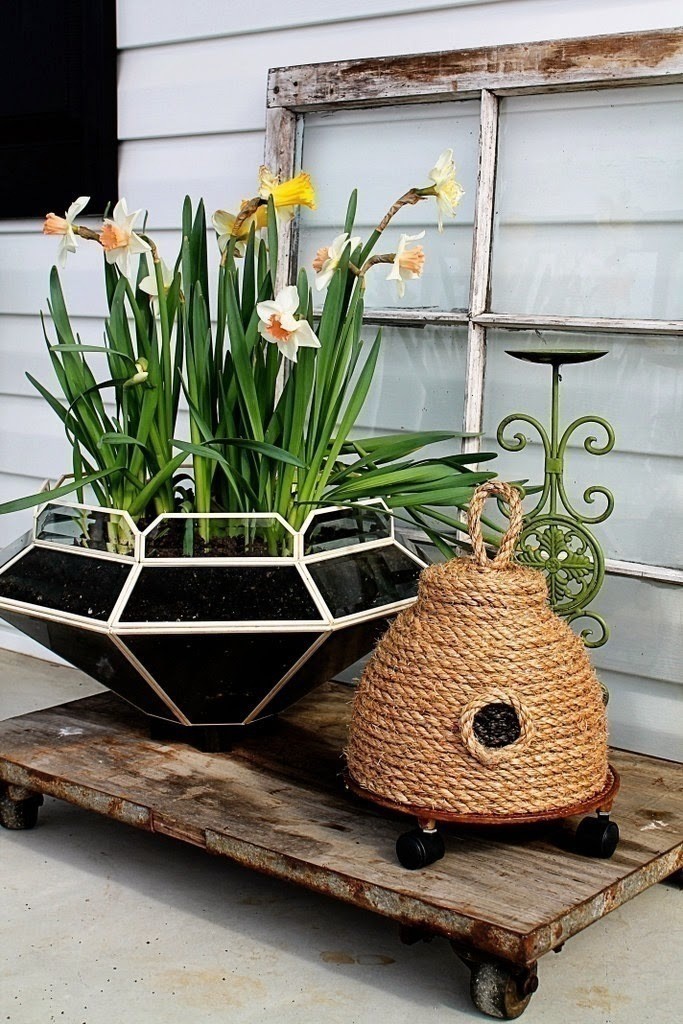 Comfortable seating, warm lighting and potted plants can do the trick.
Comfortable seating, warm lighting and potted plants can do the trick.
Jessica Bordner
4 of 45
Try a Black and White Palette
Black and white doesn't have to be boring. Create & Cultivate founder Jaclyn Johnson worked with interior designer Ginny Macdonald to make her outdoor oasis as inviting as possible. Thanks to a sleek fire pit and touches of woven accents, the space is picture-perfect.
RELATED: Tour This Beautiful Home That Embraces the Outdoors
Sara Ligorria-Tramp
5 of 45
Hang String Lights
Set the mood by draping simple string lights above your outdoor dining table. But don't stop there — add even more warmth with an oversized rug, as seen in the home of Create & Cultivate's Jaclyn Johnson.
Mike Garten
6 of 45
Pile on the Throw Pillows
You can never have too many throw pillows, especially when it comes to wooden seating. Spruce up yours with an assortment of colorful pillows that embody the beauty of the season.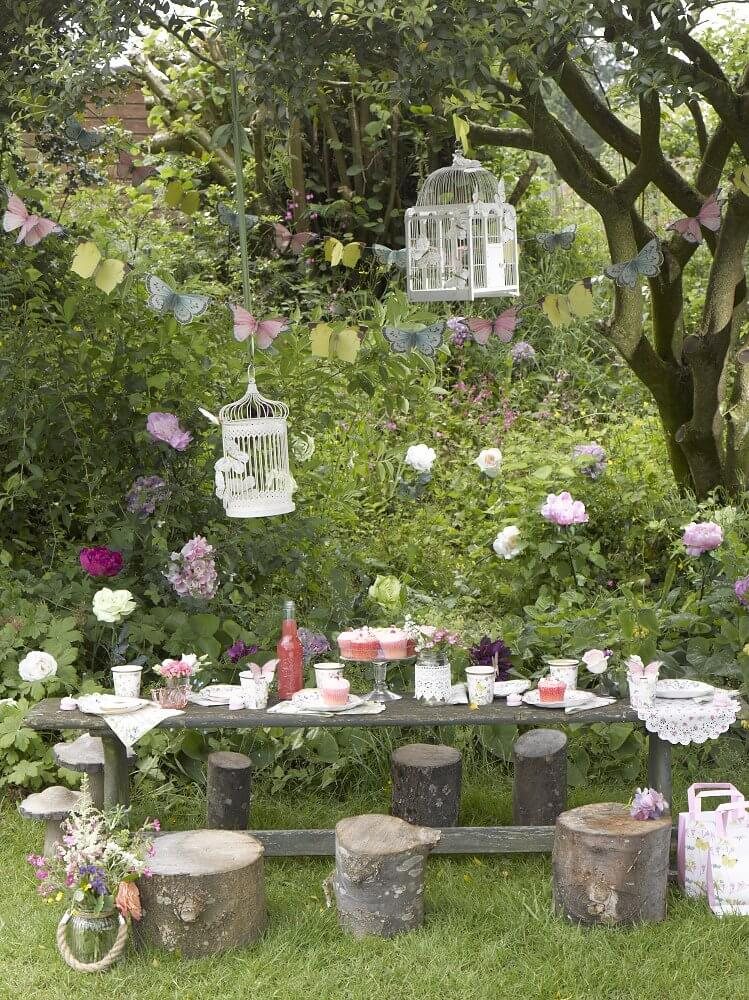
Mike Garten
7 of 45
Brighten the Space with a Mirror
Believe it or not, mirrors aren't just for indoors. Dress a bare white wall with a stylish mirror for an instant makeover.
Quentin Bacon
8 of 45
Use Woven Accessories
The simplest styling trick can add a special touch to your outdoor space. The perfect example? Serve refreshing cocktails and easy desserts on a woven tray to impress guests.
SHOP WOVEN TRAY
Hulya Kolabas
9 of 45
Pick a Coffee Table in an Unexpected Color
Bring your outdoor space to life by designing your space around a coffee table in a non-traditional color (think navy blue).
RELATED: 20 Easy Coffee Table Styling Tricks to Try Now
SHOP BLUE TABLE
Christopher Baker
10 of 45
Embrace Furniture with a Preppy Twist
Michael Partenio
11 of 45
Set the Mood with a Hanging Candle Holder
If your outdoor dining table setup is on the minimalist side, amp up the look with a hanging candle holder. All it takes are a few simple votives set on top of faux greenery to complete the look.
All it takes are a few simple votives set on top of faux greenery to complete the look.
Dawn Close, Design by Margie Grace
12 of 45
Go for Sculptural Furniture
Sometimes less is more, especially when nature acts as a stunning backdrop. Here, concrete furniture adds visual interest, while letting a striking tree steal the show.
Mike Garten
13 of 45
Upgrade Your Fence
Don't miss the opportunity to deck out a basic backyard fence. An assortment of small potted plants can do the trick.
SHOP POTTED PLANTS
Mike Garten
14 of 45
Craft a Cozy Dining Space
Love nothing more than dining al fresco? Arrange a comfortable dining spot, complete with soft throws, decorative pillows, and lanterns.
© 2014 Lisa Romerein
15 of 45
Build a Tree House
Delight your kids — and create visual interest — with a tree house that they'll want to hide out in all summer long.
DAVID TSAY
16 of 45
All-White Furniture
Perfect for minimalist lovers, all-white furniture can give your outdoor space a timeless look. Start with a white lounge chair, and finish the look by topping a rustic table with loads of greenery.
Start with a white lounge chair, and finish the look by topping a rustic table with loads of greenery.
SHOP LOUNGE CHAIR
Mike Garten
17 of 45
Install a Window Ledge
With the help of a simple wood board and shelf brackets, a backyard-facing window can serve as your very own at-home-bar. Just make sure you ledge is equal to or wider than the window itself.
SHOP WOOD BOARDS
Getty Images
18 of 45
Turn a Shed Into a Dining Room
An open shed can be turned into a fabulous dinner party space with the addition of vibrant chairs, a table, and some flowers.
SHOP COLORFUL CHAIRS
Brian Woodcock
19 of 45
Cut Bandanas Into Swags
All you need to do is cut a square bandana into a triangle, and hot glue it onto some twine. Pick any color you like and repeat until you get the perfect length.
SHOP BANDANAS
Mike Garten
20 of 45
Pick Double-Duty Furniture
What might seem like an unassuming, functional piece of furniture, a traditional potting bench with multiple levels is actually an ideal piece of storage for any outdoor space. Use it to water plants one day, and serve of cold beverages the next!
Use it to water plants one day, and serve of cold beverages the next!
I Spy DIY
21 of 45
Dress Up a Doormat
A doormat is just a doormat until you use your favorite spray paint to elevate its look. What's great about this DIY is, you can buy an inexpensive one and turn it into something that only looks like it was big bucks.
Get the tutorial from I Spy DIY »
Max Kim-Bee
22 of 45
Flip a Side Table
Turn over an oversized bucket (you may already have one buried in your garage!) and plop it down on your front porch to use as a little table to display flowers or hold a drink.
SHOP BUCKETS
Courtesy of DK Publishing
23 of 45
Turn a Ladder Into a Garden
Not enough room to grow veggies? Try stacking your container garden on a painted wooden ladder.
Get the tutorial »
Buff Strickland
24 of 45
Build a Fire Pit
Construct a fire pit by arranging curved paving stones in a circle.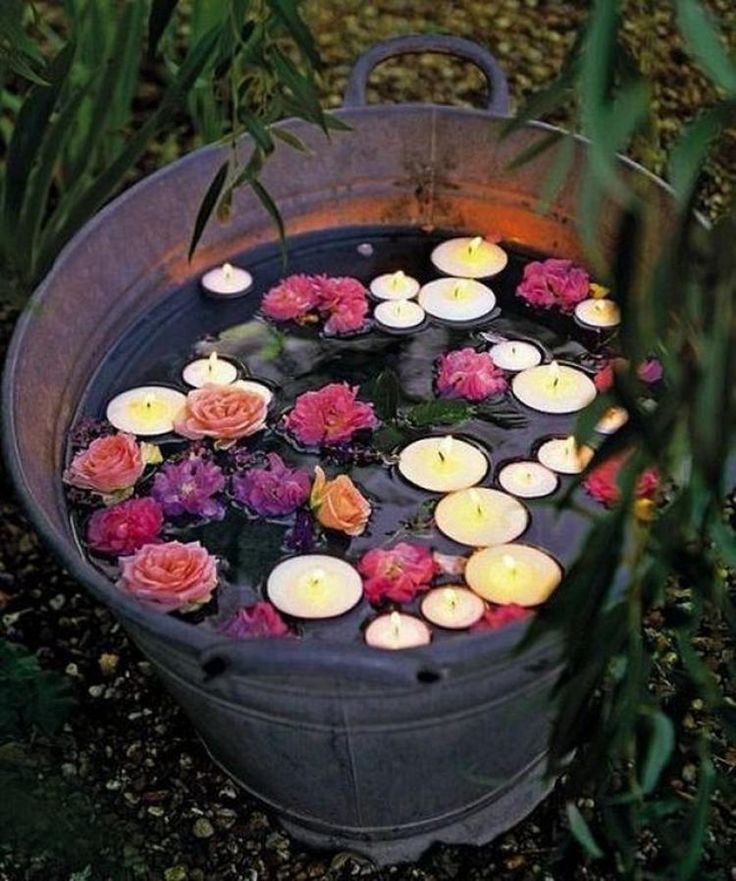 It's tip-proof, even without mortar, and the entire undertaking takes just 20 minutes from start to finish.
It's tip-proof, even without mortar, and the entire undertaking takes just 20 minutes from start to finish.
Buff Strickland
25 of 45
Hang a Pocket Planter
Hang an over-the-door shoe holder on the fence, tucking herbs into the compartments for a fun twist on a vertical planter.
Michael Partenio
26 of 45
Float a Flower Arrangement
Before guests come over, pop some floating candles and zinnias in a birdbath for an instant water feature.
Get the tutorial »
Mike Garten
27 of 45
Make a Magical Fairy Garden
The "fairy dust" may be just fun glitter but don't tell the kids. You can also mix up the theme of your planter by making a mermaid version instead.
Get the tutorial »
Michael Partenio
28 of 45
Turn a Wood Rake Into a Display
Mounting a wooden-toothed rake by the back door provides a handy spot for both hats and snapdragons.
Get the tutorial »
Buff Strickland
29 of 45
Lean a Vertical Herb Garden
Keep your basil close at hand by screwing hose clamps onto a freebie wood pallet. The backboard leans against a railing, so you can keep fresh herbs right on the deck.
Courtesy of Eden Passante
30 of 45
Make Your Own Citronella Candle
DIY garden decorations: 103 ideas, photos
Dacha is not only a place for relaxation, enjoyment of nature or useful physical activity, but also for creativity. Owners of their own piece of land always strive to ennoble it as much as possible, bringing a piece of themselves. The main thing in this business is to find an interesting idea that even a beginner can implement. Today we will talk about how to create DIY garden decorations, because even flowers need decor!
Where to start?
A small piece of land with several flower beds.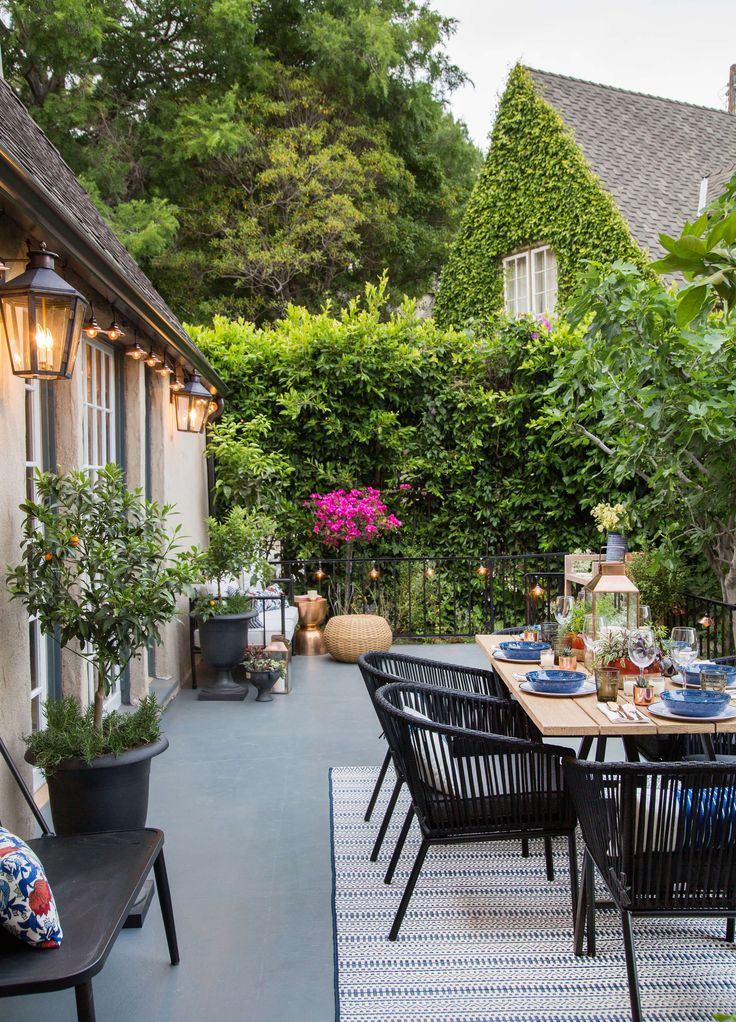 Among the tall stems of roses or tulips, bright toy gnomes with eternally smiling faces lurk. Probably, this is what a decorated garden looks like in the minds of people who absorb images from American films. In reality, oddly enough, everything is much more interesting and varied when it comes to jewelry, especially those that you can make yourself.
Among the tall stems of roses or tulips, bright toy gnomes with eternally smiling faces lurk. Probably, this is what a decorated garden looks like in the minds of people who absorb images from American films. In reality, oddly enough, everything is much more interesting and varied when it comes to jewelry, especially those that you can make yourself.
The beauty of homemade crafts is that they do not require large investments at all. Moreover, original and aesthetic elements are often realized from improvised items that you have long considered trash. Old logs, worn tires, plastic bottles are used - some of these materials will definitely be found in the pantry in the country.
To decorate a garden is not to design an interior. There are no strict stylistic and compositional rules here. But this can only complicate the task, since you will have to rely on your own sense of beauty, while managing not to overdo it with the decor. Still, plants are the main characters of your territory.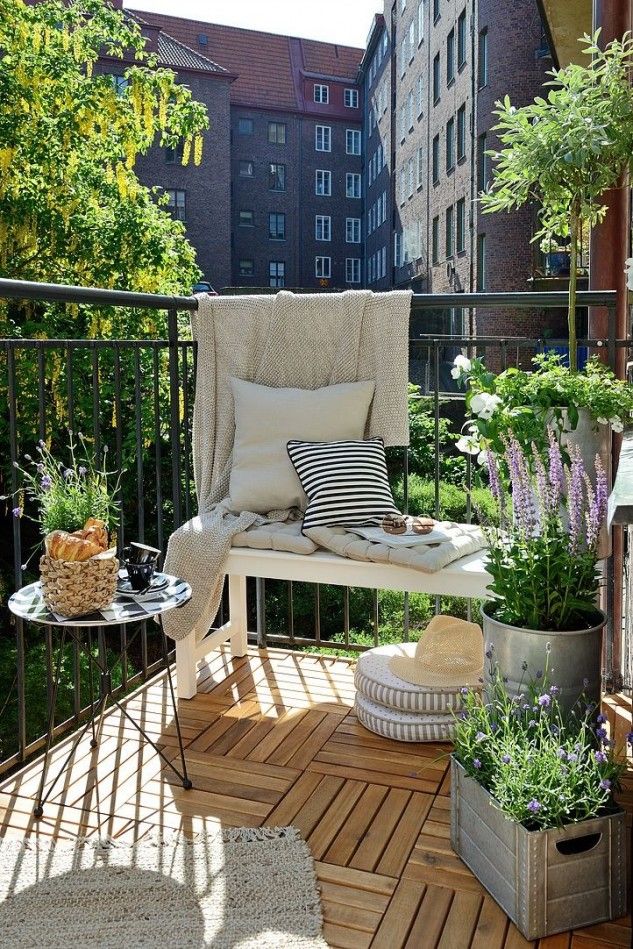
However, the general style of the plot and the design of the house must be taken into account. For example, around a minimalist building with a geometric composition, even a colorful bouquet of roses will look out of place, not like sculptures from plastic bottles. But for a cozy wooden house, you can take a walk, creating cute crafts.
Pay attention to the palette of the flower garden. If the earth is full of bright buds, then it is better to choose decorations with more restrained colors - so they do not merge with the background or look too colorful.
What objects fit into a space depends on its dimensions, your tastes and requirements. After all, filling the garden can perform not only an aesthetic function, but also serve practical purposes. In any case, if you wish, you can always find plenty of interesting solutions!
Functional items for the garden
These are not full-fledged decorative elements, but their placement can dramatically change the appearance of the garden, as well as turn it into a pleasant place to relax.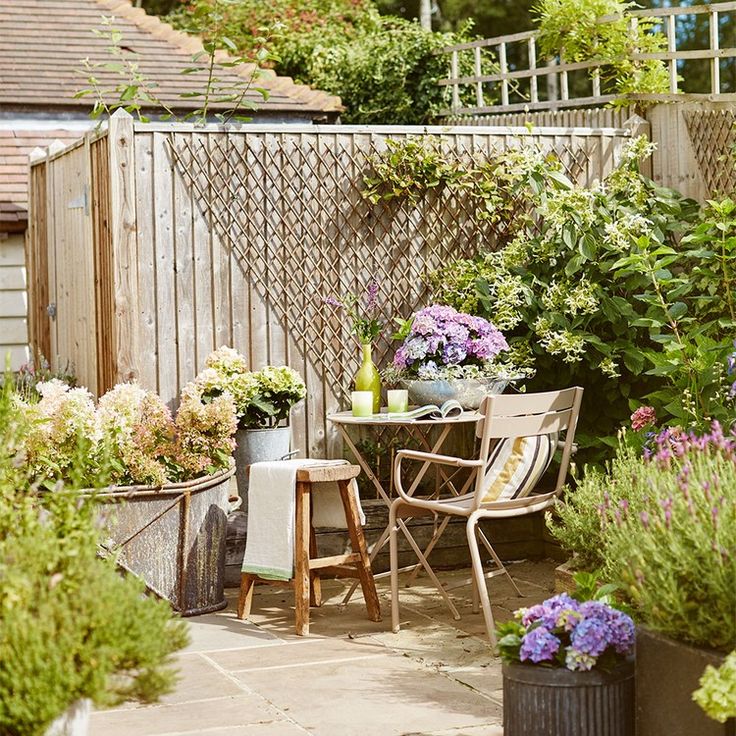
Fences and fences
In order not to let blooming flowerbeds be decorated with neat gnomes, and meanwhile the fence consists of faceless old boards, you need to take care of this detail.
The fence can be planted with girlish grapes, ivy or roses. This type of decor looks natural and romantic. A solid fence can be painted in a bright color or painted with patterns - if your artistic skills allow.
Wrought-iron fence with plants braiding it looks elegant. And it will be possible to divide the site into zones with the help of a low fence made of curly mesh.
Swing
Have you ever thought that a small swing can become not only a guarantee of a joyful holiday for your child, but also an aesthetic piece of decor in the garden? Surrounded by fruit trees or using them as a prop, they are sure to bring a rainbow of vibes to your yard.
The simplest and painfully familiar solution from childhood is a tire swing tied to a tree. Or, alternatively, a small board on the ropes.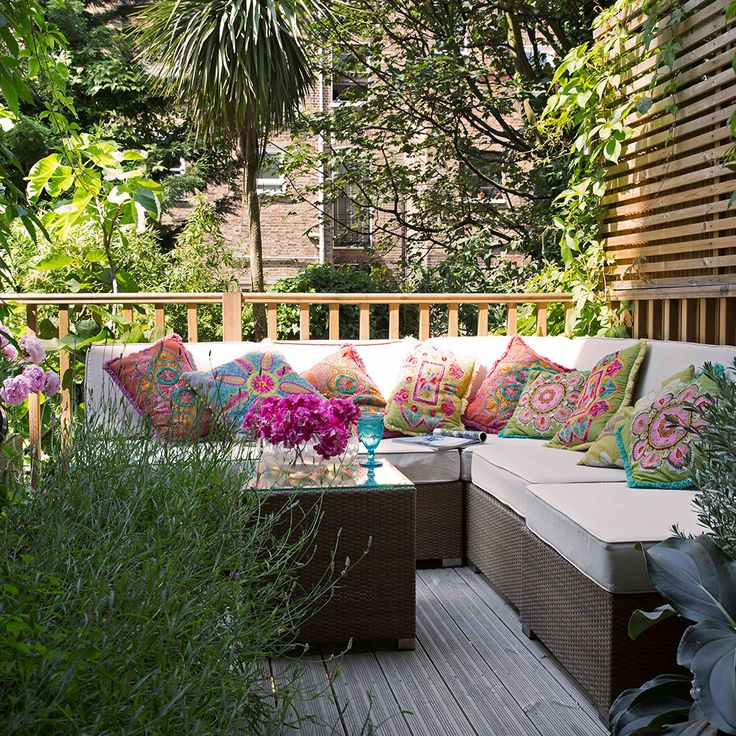 You can go a little further and build a hammock - for this you need a dense solid fabric.
You can go a little further and build a hammock - for this you need a dense solid fabric.
More complex types of swings will not be possible without woodworking skills. But the result is worth all the effort: single or double designs with pillows and a blanket are the dream of any summer resident.
Birdhouses
If you want to fill the garden with bird chirping, you need to make sure that the birds want to be on your site. Comfortable and, most importantly, aesthetic birdhouses will help with this.
It is better to do without plastic bottles as a feeder and make a full-fledged house, preferably from wood. But you can also always create an original item from improvised materials, for example, a dried pumpkin or even dishes.
Lighting
For a garden with a large area, you will have to take care of artificial light sources so as not to wander through it in the evening, as if in a dense forest.
Tall street lamps will only look appropriate next to a gazebo or a place to relax.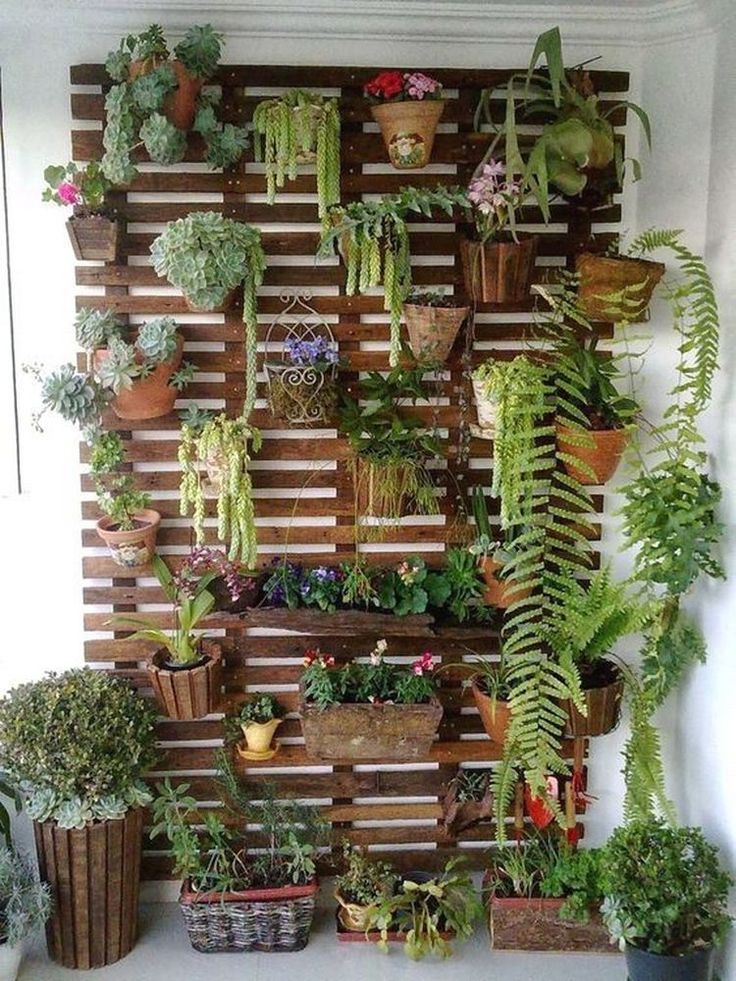 In other places, you can install hanging lanterns. Lamps on the lawn or hidden between plants also look romantic. The swing can be equipped with a multi-colored garland.
In other places, you can install hanging lanterns. Lamps on the lawn or hidden between plants also look romantic. The swing can be equipped with a multi-colored garland.
Oasis in the garden: creating a reservoir
Pond - the best decoration for the garden. If you find that groundwater is located close to the surface in the country, consider yourself lucky - this will allow you to occupy an area of \u200b\u200bland that is not suitable for planting.
For less fortunate owners there is an option with an artificial pond. Ideally, if it is a little away from the lawn. To create a pond, you can buy a special container or cover a dug hole with polyethylene.
By itself, a finished pond is a real field for creativity. You can launch fish, a floating flower bed, etc. into it.
Ideas for garden paths
Every self-respecting summer resident who monitors the aesthetics of his site should take care of creating beautiful and neat paths.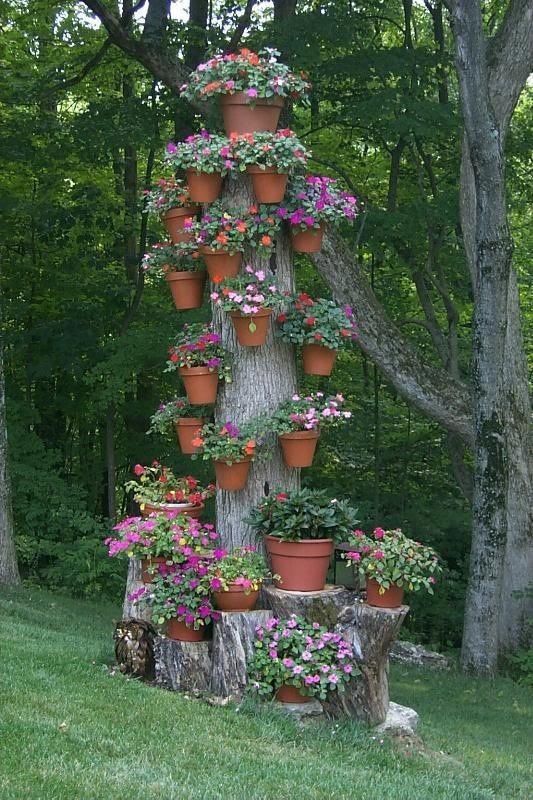 After all, the paths trodden through the thickets look extremely untidy, and also complicate the movement in the garden. Fortunately, solving this problem yourself is quite realistic and quite exciting, given the variety of options.
After all, the paths trodden through the thickets look extremely untidy, and also complicate the movement in the garden. Fortunately, solving this problem yourself is quite realistic and quite exciting, given the variety of options.
The complexity of the choice is due, perhaps, to a wide range of materials: wood, plastic, rubber or paving slabs. Natural stone looks luxurious, but it is strangely combined, for example, with products made from plastic bottles. But it is well suited for a landscape with a pond.
Wooden alleys look very cozy thanks to their deep texture. In order for them to last a long time, the surface is pre-coated with a protective varnish.
Owners of brick houses will certainly have material for the appropriate paths. By combining details of different shades, you can create geometric patterns, like a mosaic. However, paving stones, pebbles or gravel are also suitable for this effect - the cheapest option.
However, some craftsmen manage to create unusual alleys from waste materials - soda caps or wine corks.
Garden decorations from plastic bottles
Oh, how many wonderful plastic bottles are prepared for us! And don't let their unenviable environmental reputation scare you. As a decor in the garden, they will serve with distinction. Plastic is quite strong, durable and offers many options for use, despite the external unattractiveness.
Pet bottles are an excellent basis for creating figurines. To do this, in addition to the containers themselves, you will need glue, scissors and acrylic paint in case the initial surface does not suit you. Well, then you need to use your imagination, because from such a container you can make any figure. In this case, you can use both a solid container and cut out many small parts from it.
Plastic bottles are great for creating useful decorative objects, such as flower beds. To do this, it is enough to cut a small vertical section from the eggplant and fill it with earth. The “nose” of the container will become the muzzle of an animal figurine, which can be decorated in any way possible.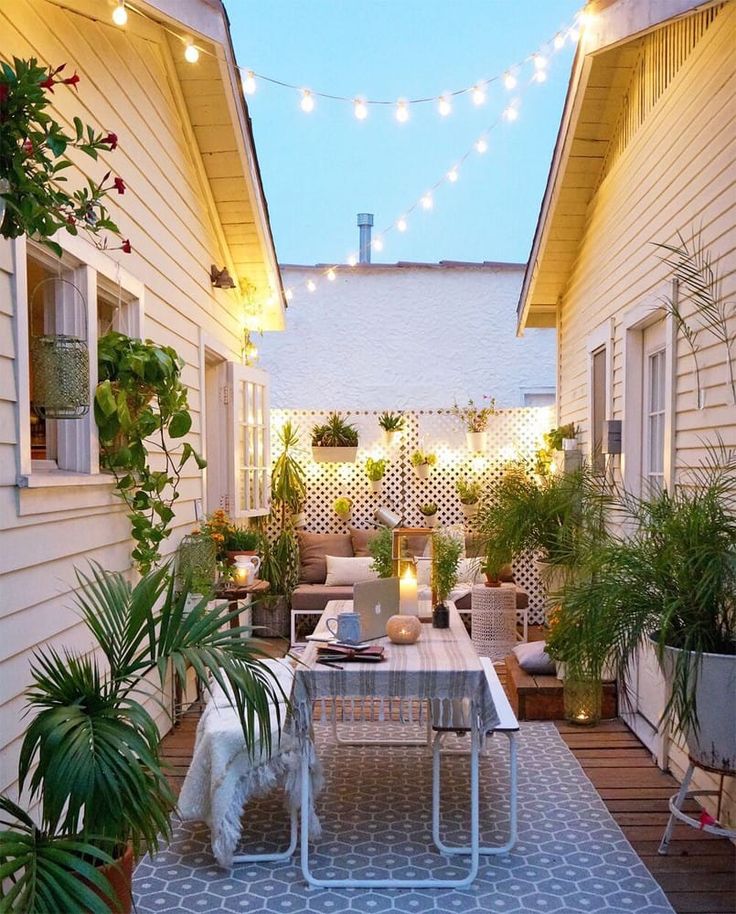
Another option is cheap flowerbed borders. For this, a smaller container is suitable - they must be filled with sand or another weighting base, and then “landed” around the desired piece of land. So that all this does not look boring, the border can be painted.
Stone garden ornaments
In addition to making garden alleys out of pebbles, it is also an excellent material for a wide variety of crafts.
A large stone is used for flowerbeds and flower beds, laying it out in the desired sequence - for example, as a kind of border. For the stability of the structure, pebbles can be applied to the cement mortar, while trying to avoid the formation of cracks. In this way, it will be possible to create tall structures.
Traditionally in landscape design, natural stone is used to decorate ponds, which is laid out along its contour, alternating stones of different sizes. A well-groomed pond will become a key object of any garden.
Some people also use pebbles as a facing material for garden elements.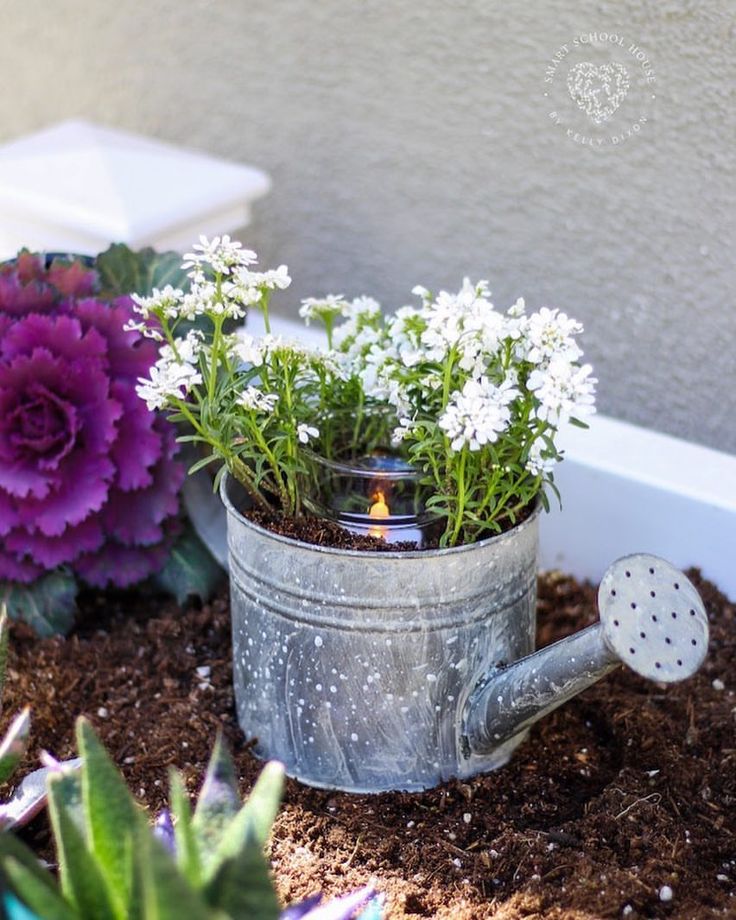 With their help, you can even create real art objects by filling frame structures of a given shape with this material.
With their help, you can even create real art objects by filling frame structures of a given shape with this material.
But the most popular way to use stone is figured decor. Pebbles are an excellent canvas for intricate and simple artistic compositions that will wonderfully decorate any garden. With their help, you can create, for example, a ladybug or a large cat - it all depends on the level of your skill.
Tire garden ornaments
Nowhere to put old car tires? No problem, add them to your garden. Thanks to simple manipulations, tires turn into very aesthetic, and sometimes useful products that will decorate any area.
A favorite type of decor made from this material is animal figures. Only to create them you need to understand how to make a swan or an alligator from a wheel that has a completely different shape. And you can peep the master classes and make sure that there is nothing complicated about it. Acrylic paint plays a key role in the design, which will “revive” your character.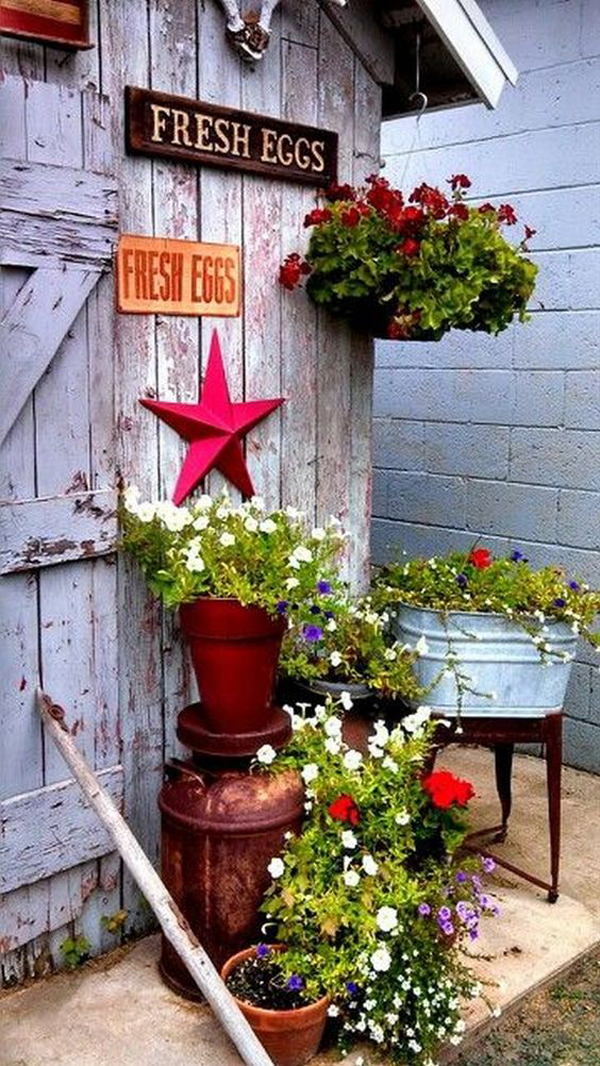
Some craftsmen even make whole garden furniture sets from tires, with a table and chairs. You can also try by building a playground first as a warm-up. Your child will love jumping over the wheel or having fun on the obedient zebra.
Practically no work other than painting is required to make a flower bed out of tires. It is enough to install them in the right place, you can in several levels, and then fill them with everything you need, like a pot. Cheap and cheerful!
Video: Crafts for a garden or a summer house with your own hands
How to make your garden beautiful with your own hands, garden design photo
A beautiful colorful garden from spring to late autumn is not a dream. But not everyone wants to spend all their time on the site, planting flower beds and caring for the lawn.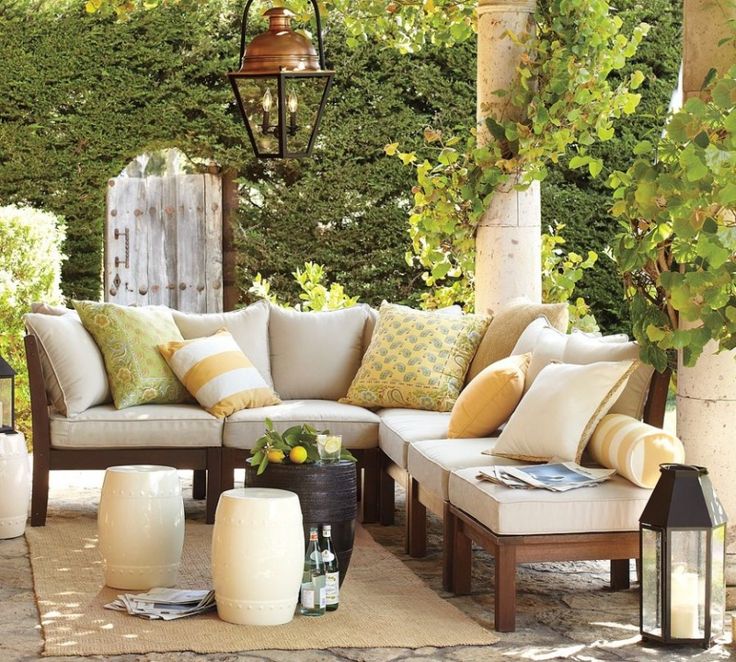 How to make a garden beautiful and cozy with a minimum of effort - to enjoy the colors of the garden, lying on a deck chair with a book or rocking on a garden rocking chair? Firstly, competently plan the landscape and, secondly, select plants that require a minimum of care. We tell you how to make a beautiful garden with your own hands - photos and ideas are attached!
How to make a garden beautiful and cozy with a minimum of effort - to enjoy the colors of the garden, lying on a deck chair with a book or rocking on a garden rocking chair? Firstly, competently plan the landscape and, secondly, select plants that require a minimum of care. We tell you how to make a beautiful garden with your own hands - photos and ideas are attached!
RHS Chelsea
Think about which garden is easier for you to keep tidy - a regular French garden that requires frequent cutting of garden forms, beds that exclude even a hint of weeds, or a slightly neglected English with its free layout? Logic suggests that the English version is more convenient.
Dear Garden Associates, Inc.
In the photo: a picturesque lawn with wildflowers will help you easily create a beautiful garden with your own hands
The fewer flower beds in the garden, the easier it is to care for it.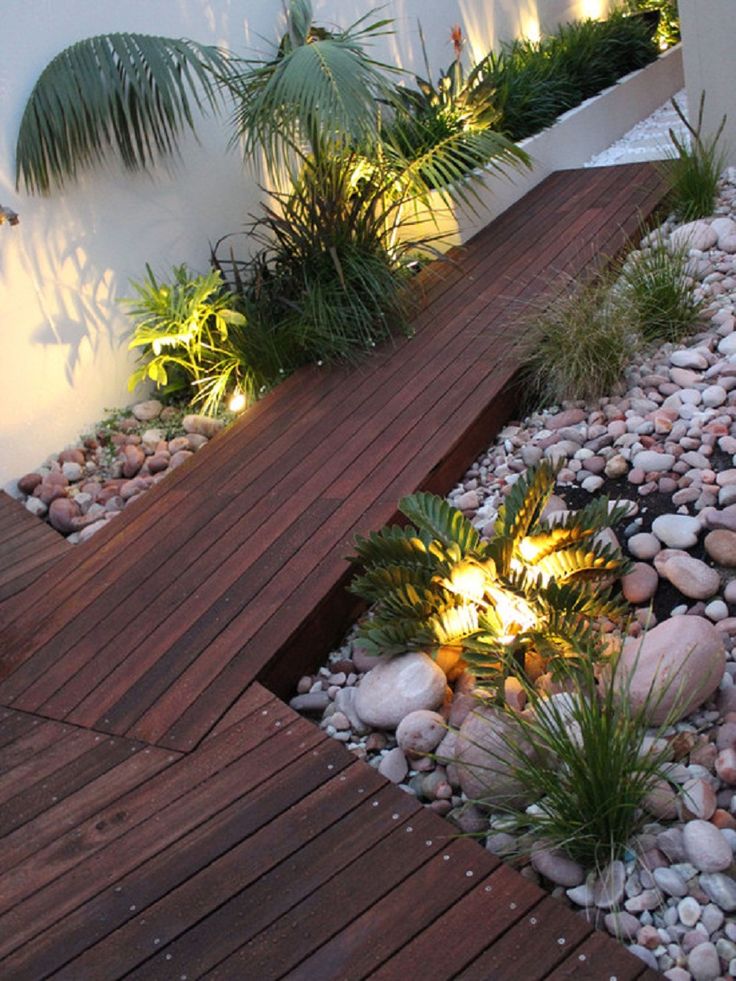 Choose vibrant shrubs that change their appearance throughout the season. But still it is difficult to imagine a luxurious garden without flowers at all. How to beautifully decorate a garden without making a lot of effort? Lay large areas under the lawn or a picturesque lawn with clover, daisies, tenacity. Weeds are not so noticeable on it - it is enough to mow them. By the way, daisies easily tolerate a haircut and bloom remarkably, very low above the rosettes of leaves.
Choose vibrant shrubs that change their appearance throughout the season. But still it is difficult to imagine a luxurious garden without flowers at all. How to beautifully decorate a garden without making a lot of effort? Lay large areas under the lawn or a picturesque lawn with clover, daisies, tenacity. Weeds are not so noticeable on it - it is enough to mow them. By the way, daisies easily tolerate a haircut and bloom remarkably, very low above the rosettes of leaves.
Jerry Fritz Garden Design
In the photo: how to beautifully decorate a garden without flowers? - Plant ornamental shrubs!
A beautifully flowering front garden that fills the space in front of the house will create the feeling of a painstakingly cultivated garden. But the rest of the area can be left under the lawn, surrounded by bushes. Instead of flower beds with geometric shapes, create mixborders with a free arrangement of different plants.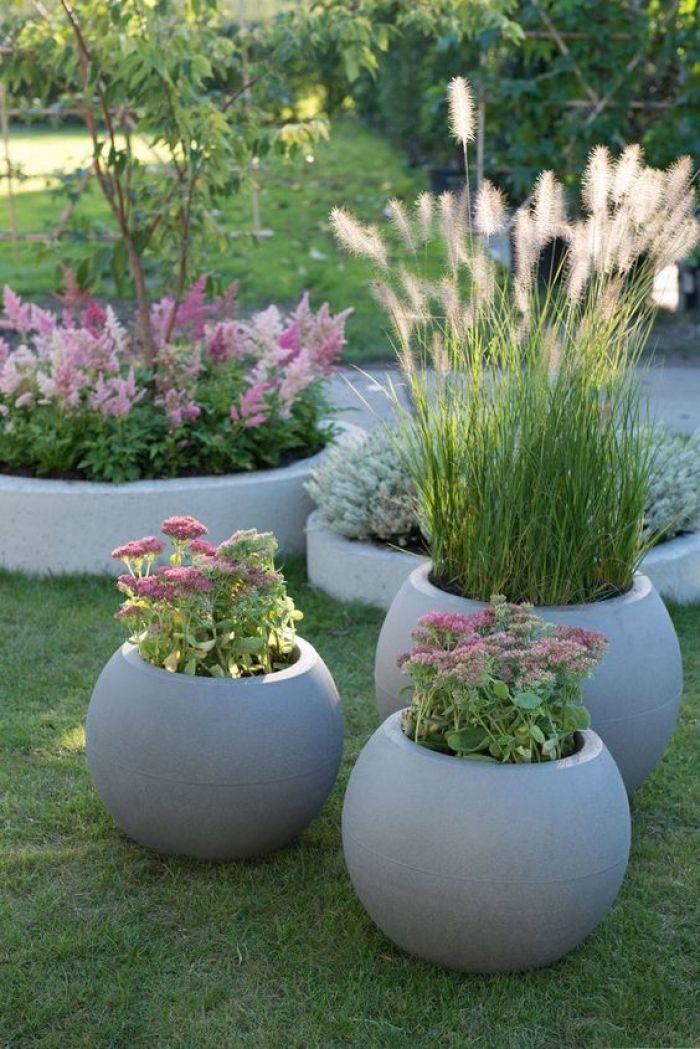 They look more picturesque and look good even when overgrown with weeds.
They look more picturesque and look good even when overgrown with weeds.
Choose frost-tolerant plants that are resistant to our climate. Combine plants with different foliage in height, shape and color so that even when not in bloom, the garden remains decorative and beautiful. Arrange mixborders at the intersection of paths to complicate the look of the garden.
RELATED ARTICLE…
Frost-resistant plants - choosing and trying on
Kingdom Landscape
In the photo: when deciding how to decorate the garden, give preference to beautiful compositions of unpretentious plants and various decorative elements
Van Zelst Inc
If there is a landscape difference on the site, do not be afraid to create terraces and retaining walls - they will enrich the garden picture, make it more picturesque.
A paved patio will also do the job of providing a backdrop for the flowers, and it will also reduce the hassle of mowing the lawn, a tiring task even with a self-propelled petrol mower.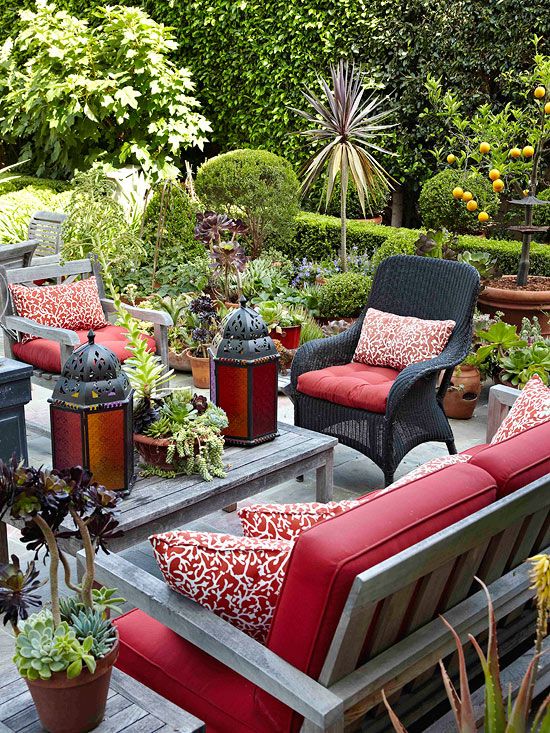
By the way, quality equipment will greatly simplify the maintenance of the garden. In addition to a lawnmower suitable for open flat spaces, stock up on a petrol trimmer to cut grass and weeds around bushes and trees.
NLH Landscape Architects
Lawn Tip
Once the grass has grown over ten centimeters, a weekly mowing (or at least once every two weeks) will accompany your gardening experience. Remember that proper lawn mowing involves mowing with a “snake”, so that the grass crushed by the wheels falls under the blade of the mower going in the opposite direction.
The shape of the lawn and the organization of the plantings around it is very important. The more separately growing plantings in the middle of the lawn, the more time you will spend. The border between the lawn and solid plantings is another important decision to simplify care.
Optimizing lawn mowing is no reason to completely abandon the solitaire in the middle of it.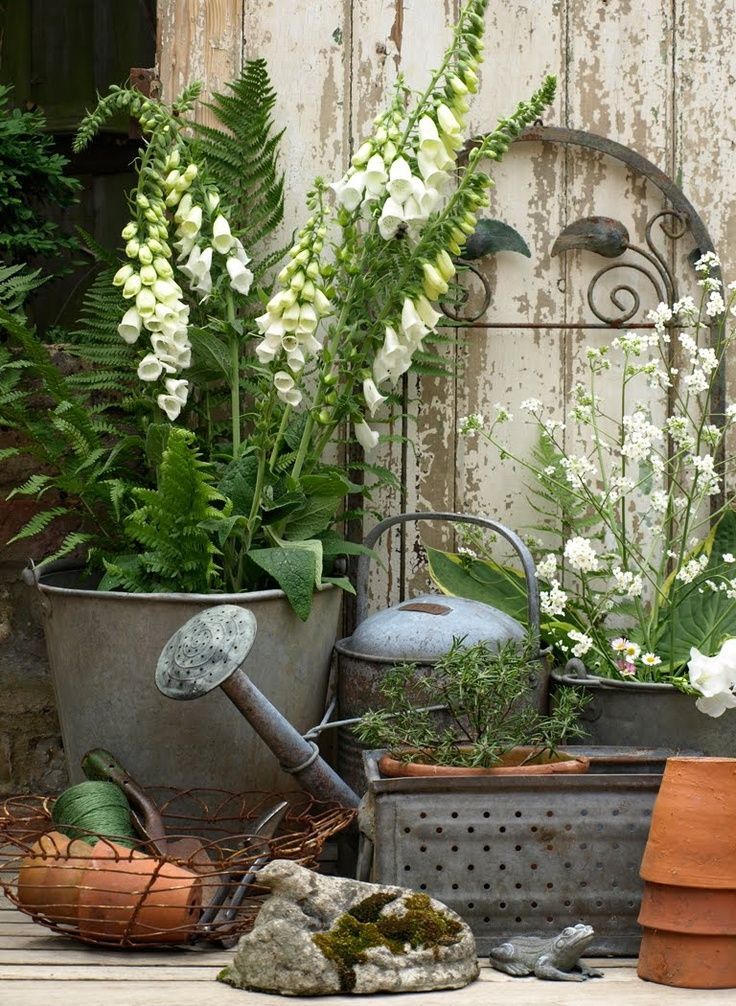 If we are talking about a tree, form its crown at such a height that you can walk under it freely. Plants that should be spaced apart should not be planted closer than the width of the wheels of a lawn mower, otherwise you will have to cut the grass with a trimmer, and this is quite tedious.
If we are talking about a tree, form its crown at such a height that you can walk under it freely. Plants that should be spaced apart should not be planted closer than the width of the wheels of a lawn mower, otherwise you will have to cut the grass with a trimmer, and this is quite tedious.
RHS Chelsea
To avoid clogging the soil between out-of-lawn plantings, cover the soil with a decorative mulch (such as bark). Between young plantings, it is worth covering the ground with non-woven material and sprinkle with gravel - this will save you from weeding and ubiquitous grass. Or, if fresh plantings of shrubs and perennials require filling in the space between young plants, colorful annuals can be used. These simple tricks will help you not only save time on caring for the site, but also decorate your garden.
RELATED ARTICLE…
Garden Care – Creating a Low Maintenance Garden
J.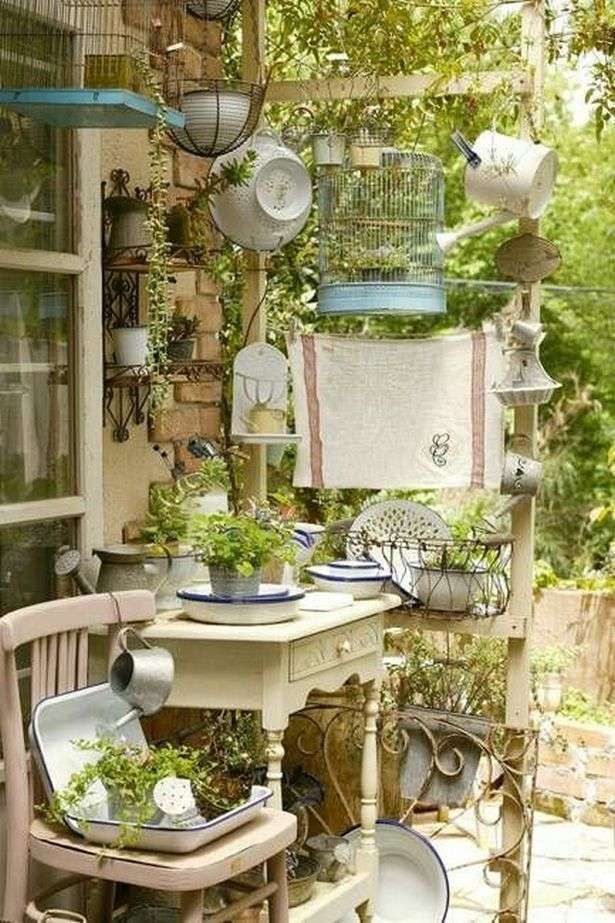 Peterson Garden Design
Peterson Garden Design
What to Plant in Your Garden
do not require pre-germination, bloom for a long time and brightly, and also sown next year by self-sowing: escholzia (Eschscholzia), self-seeding poppy (Papaver rhoeas), annual flax (Linum grandiflorum), cornflower (Centaurea), flaxseed (Linaria vulgaris), calendula (Calendula officinalis).
Verdance Landscape Architecture
Bulb flowers: buried and forgotten
Tulips and hyacinths are magical spring flowers that delight the eye at the beginning of the season. But imagine what will be in their place in the summer, as soon as the flowers fade? Drying leaves that you still can’t cut off, so as not to deprive the bulb of the accumulated nutrients in this way. But after the leaves have completely dried, you need to have time to dig the bulbs to dry. And in late summer or early autumn, you will have to re-plant them.
If you really want tulips, plant wild species: they look rather unusual. Daffodils in one place can bloom well without digging for about 4-5 years. The only problem is yellowing leaves that cannot be cut until completely dry. Therefore, choose a place for them next to perennials, which will cover them with their leaves in summer.
Daffodils in one place can bloom well without digging for about 4-5 years. The only problem is yellowing leaves that cannot be cut until completely dry. Therefore, choose a place for them next to perennials, which will cover them with their leaves in summer.
Arcadia Gardens, LLC
However, if you cannot imagine your English garden without large beautiful tulips in spring, place their bulbs in plastic nets in the ground - it will be easier and faster to dig them out to dry. Allow yourself to forget about this process for a year - one summer spent in the ground without drying out will not cause such terrible damage to the tulips blooming next year. The ideal "shelter" for faded bulbs will be hostas, peonies, daylilies.
Maria Hickey & Associates Landscapes
Do not be afraid of weeds and constantly fight with them. The garden, close to the country style, suits a slight neglect.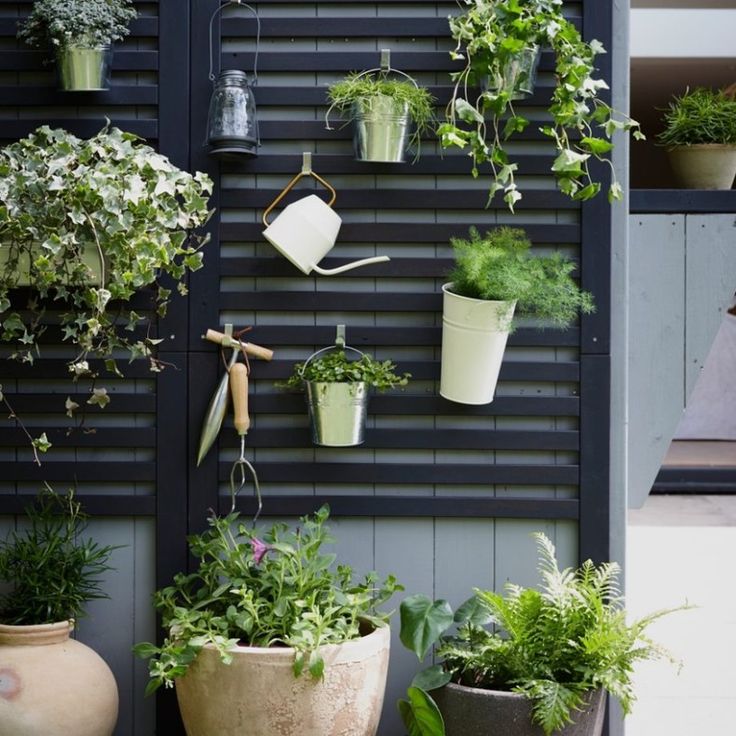 The latest trends at the Chelsea Garden Show are further proof that weeds can brighten up any garden.
The latest trends at the Chelsea Garden Show are further proof that weeds can brighten up any garden.
Keep the natural forms characteristic of your soil. They will give the garden a more natural look. For example, an ordinary garden chamomile creates beautiful compositions without any participation of a gardener, links plantings together. In addition, it blooms for a long time and is very resistant to heat and drought. Even burdock with its huge leaves can look impressive, and thistles can decorate a composition with lupins and rudbeckia with their flowers.
Read also ...
CHELSEA FLOWER Show lessons: What fashionable colors to decorate the garden
RHS Chelsea
perennials - only the most unpretentious 2nd fertilizers are required, pungs before the cuts and cutting out of the folia care will pay off a hundredfold when the garden is filled with huge fragrant flowers. Daylilies thrive in full sun and, like peonies, even after they have faded, will look decorative and neat.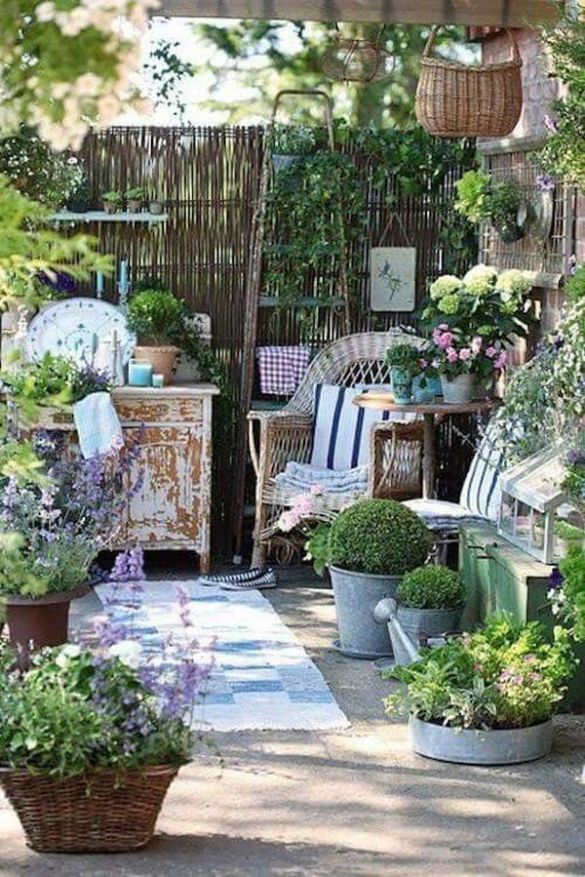
Ornamental foliage and beautiful arrows with white or lilac bellflowers are ideal for semi-shady and shady places (including under trees, but not near the trunks). True, the hosts will need to be cut off after the first frosts, which will “beat” their leaves, and in October they will be mulched with earth for the winter.
Irises - Siberian (Iris sibírica) and marsh (Iris pseudacoru), easy to care for - will decorate the damp sunny places of the garden. Before the onset of winter, they will also need to be cut at a height of 10 cm above the ground. Bearded irises will require more care: weeding, digging rhizomes (bearded irises stop blooming profusely and start to hurt when their rhizomes deepen), shelters for the winter. But still, bearded irises are one of the best garden decorations in June. To make it easier to care for them, choose old proven varieties that grow quickly and are resistant to diseases.
Daisies, lupins, rudbeckia - all these are very resistant plants that look beautiful both in flower beds (elongated flower beds) and separately in a mixborder. They can be grown in the garden directly from seeds.
They can be grown in the garden directly from seeds.
Biennials - Turkish carnation (Dianthus barbatus), stock rose (Alcea rosea) - are also suitable for flower beds and mixborders and are very easy to grow. The only thing to consider is that they bloom only in the second year after planting, and then they must be removed and planted again, otherwise there will be no lush flowering.
RELATED ARTICLE…
Garden Perennials - Hardy Long Flowering Plants
Simply Garden Design LLC
Flowering Ornamental Shrubs
shrubs . Arrange shrubs of different types, heights and shapes around the perimeter of your garden, near the fence, next to the buildings. The more picturesque, the better - even if one of them freezes over during the winter, the neighbors will hide its untidy appearance.
The common lilac is a must-have in a low-maintenance garden. In May, the fragrance of her flowers will flood the entire garden, and everyone knows about the beauty of the luxuriantly flowering bushes. Choose varieties with large double flowers - "Hope", "Beauty of Moscow" and other varieties of L. A. Kolesnikov, striking in the size of flowers and wintering well in the Moscow region. The only concern is to trim the faded brushes after flowering.
Choose varieties with large double flowers - "Hope", "Beauty of Moscow" and other varieties of L. A. Kolesnikov, striking in the size of flowers and wintering well in the Moscow region. The only concern is to trim the faded brushes after flowering.
RELATED ARTICLE…
Ornamental Shrubs – Selection and Planting
Le jardinet
Grow quickly in a sunny place into a huge sprawling three-meter bush capable of vesicle. To create a contrasting composition with other shrubs and flowers, choose one of the brightest expressive varieties - Physocarpus Diablo with dark foliage. In June, it will be covered with white flowers, collected in slightly pinkish corymbs. In June, mock orange (garden jasmine) will decorate the garden with its white flowers with the scent of jasmine.
White Derain (Cornus alba) in its popular variegated form blooms beautifully in spring, expressively turns pink in autumn, and its red twigs are spectacular even in the winter garden.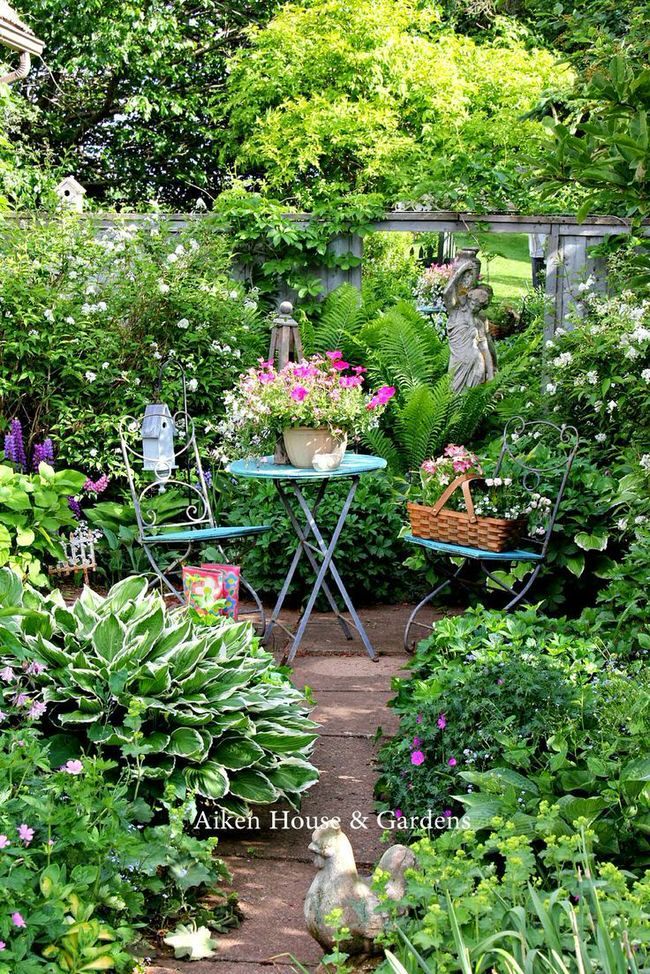 Plant sod on moist soils, where it develops rapidly, and always in the back of the composition, otherwise soon you will not see neighbors behind it - sod, like the silver sucker, behaves quite aggressively, taking up much more space than was allotted according to plan.
Plant sod on moist soils, where it develops rapidly, and always in the back of the composition, otherwise soon you will not see neighbors behind it - sod, like the silver sucker, behaves quite aggressively, taking up much more space than was allotted according to plan.
Don't forget the wild rose - after fragrant flowers, it leaves bright fruits to decorate the garden.
Decide for yourself, having estimated the amount of necessary autumn work, whether you are ready to see forsythia in your garden. This yellow-flowered yet leafless shrub makes a big impression in early spring. By autumn, its graceful foliage is painted in different colors. But for good flowering of forsythia, it is necessary to hide it in a shelter during the winter near Moscow: in the fall, you will have to pay special attention to forsythia, bending its branches to the ground and wrapping it with lutrasil.
Kingdom Landscape
For the foreground in a composition of shrubs and perennials, spireas in all their diversity are suitable - gray spirea (Spirae a cinerea), Japanese spirea (Spiraea japonica), Vanguta spirea (Spiraea vanhouttei) and others.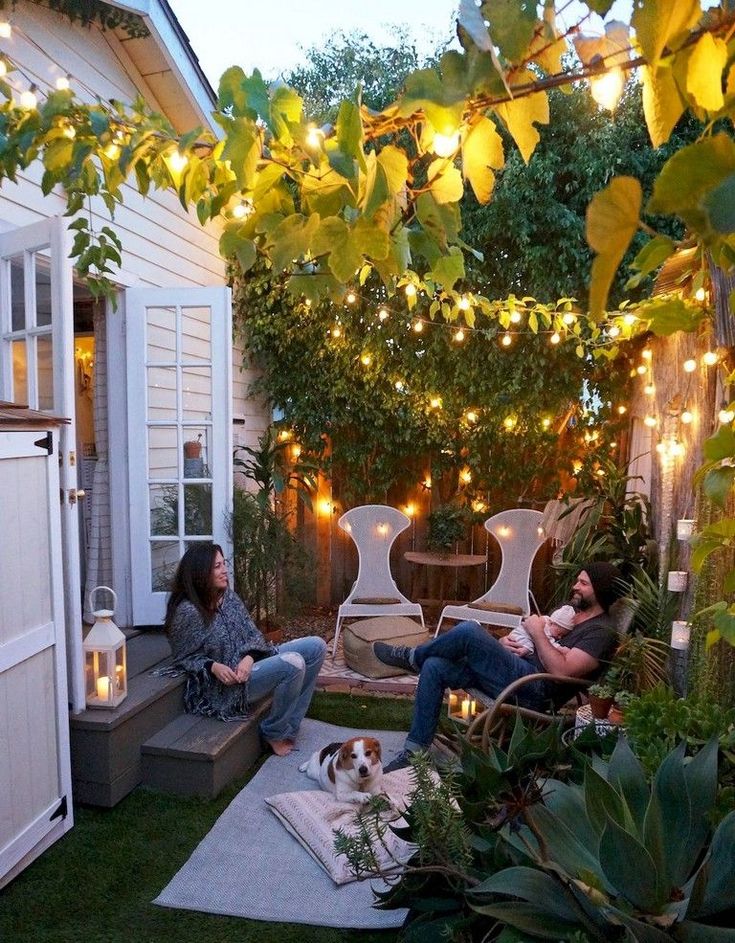 All of them are very decorative: they bloom beautifully, moreover, at different times and without any care. The branches of a low gray spirea are completely doused with small white flowers in the spring. In summer and even again in autumn (when pruned after flowering), Japanese spirea blooms with corymbs of pink flowers.
All of them are very decorative: they bloom beautifully, moreover, at different times and without any care. The branches of a low gray spirea are completely doused with small white flowers in the spring. In summer and even again in autumn (when pruned after flowering), Japanese spirea blooms with corymbs of pink flowers.
The Plant Place Nursery
Kristen Charlson
Hydrangea arborescens and Hydrangea paniculata are an ornament for semi-shady places in the garden. It looks great in compositions with coniferous plants.
Barberries (frequently found common barberry Berberis vulgaris and Thunberg's barberry Berberis thunbergi) do not bloom with yellow flowers, but their characteristic leaves and branches with small red berries look very decorative. Moreover, last year's berries remain on the bush. The same can be said about the European spindle tree, extremely decorative in autumn thanks to the flaming foliage and its special fruits in the form of opened bright pink boxes with orange berries inside.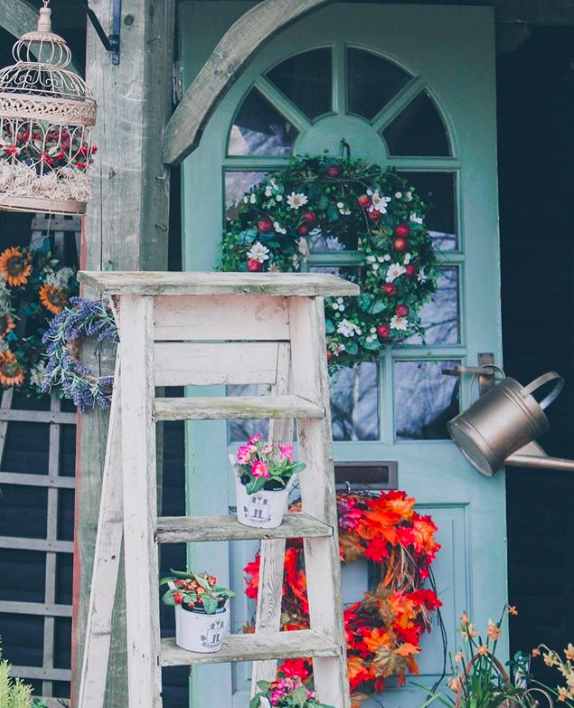
'Hakuro Nishiki' Willow (Salix integra Hakuro Nishiki) is another low-maintenance ornamental shrub whose foliage, rather than flowers, is worthy of becoming a garden decoration. The white leaves on the young shoots of this willow are painted in the sun in pale pink tones.
Article on the topic ...
Shadowing plants for the garden
Van Zelst INC
Van Zelst
trees in color and not only
It usually has to wait too long for their plants, so far planted by the plants of themselves beauty, and not every gardener can master the planting of large-sized plants. So if your garden already has large trees, let them be the basis for creating compositions from shrubs and perennials, because without them it is difficult to achieve a sense of natural luxury and scope in the most beautiful garden.
Of the things worth adding to the garden, apart from beautifully flowering apple trees, cherries, plums, is bird cherry in its red-leaved form. Horse chestnut with candles of flowers and decorative foliage is good even in the form of a young tree. Manchurian walnut (Juglans mandshurica) due to large openwork leaves, growth rate, excellent winter hardiness is another candidate for your garden. The red-leaved forms of oak and maple will support the purple barberry bushes, the red-brown foliage of the Diabolo vesicle with the color of the foliage.
Horse chestnut with candles of flowers and decorative foliage is good even in the form of a young tree. Manchurian walnut (Juglans mandshurica) due to large openwork leaves, growth rate, excellent winter hardiness is another candidate for your garden. The red-leaved forms of oak and maple will support the purple barberry bushes, the red-brown foliage of the Diabolo vesicle with the color of the foliage.
James R. Salomon Photography
Eiler Garden Landscape Design Studio
Evergreen Garden
Be sure to add coniferous shrubs and trees to the garden. Junipers of different forms perfectly connect different plants in a mix-border - you can already create a decorative garden from junipers and thujas alone, playing with the color of the needles (yellow-colored Aurea forms, white-tipped Albospikata) and the shape of the plants. All these plants can be easily found in nurseries: more budgetary - in the form of very small seedlings and more expensive - at the age of three to five years.